Gardening inside a glass cocoon can feel like a puzzle of pots, tools, and temperature swings, but smart greenhouse shelving turns cramped corners into flourishing tiers of greenery. Recent guides on maximizing vertical space and preventing clutter highlight how well-chosen shelves boost airflow, drainage, light penetration, and even water conservation, all while sparing your back and wallet Hoop House USA Gardeningetc. Below you’ll find twenty fresh, practical ways to stage plants—from repurposed pallet benches to cable-suspended glass ledges—each distilled into a concise, 100-to-120-word snapshot you can adapt to any size greenhouse. Explore the mix, pick the ideas that fit your frame, and watch square footage expand upward instead of outward.
1. Vertical Wire-Mesh Greenhouse Shelving for Space Maximization
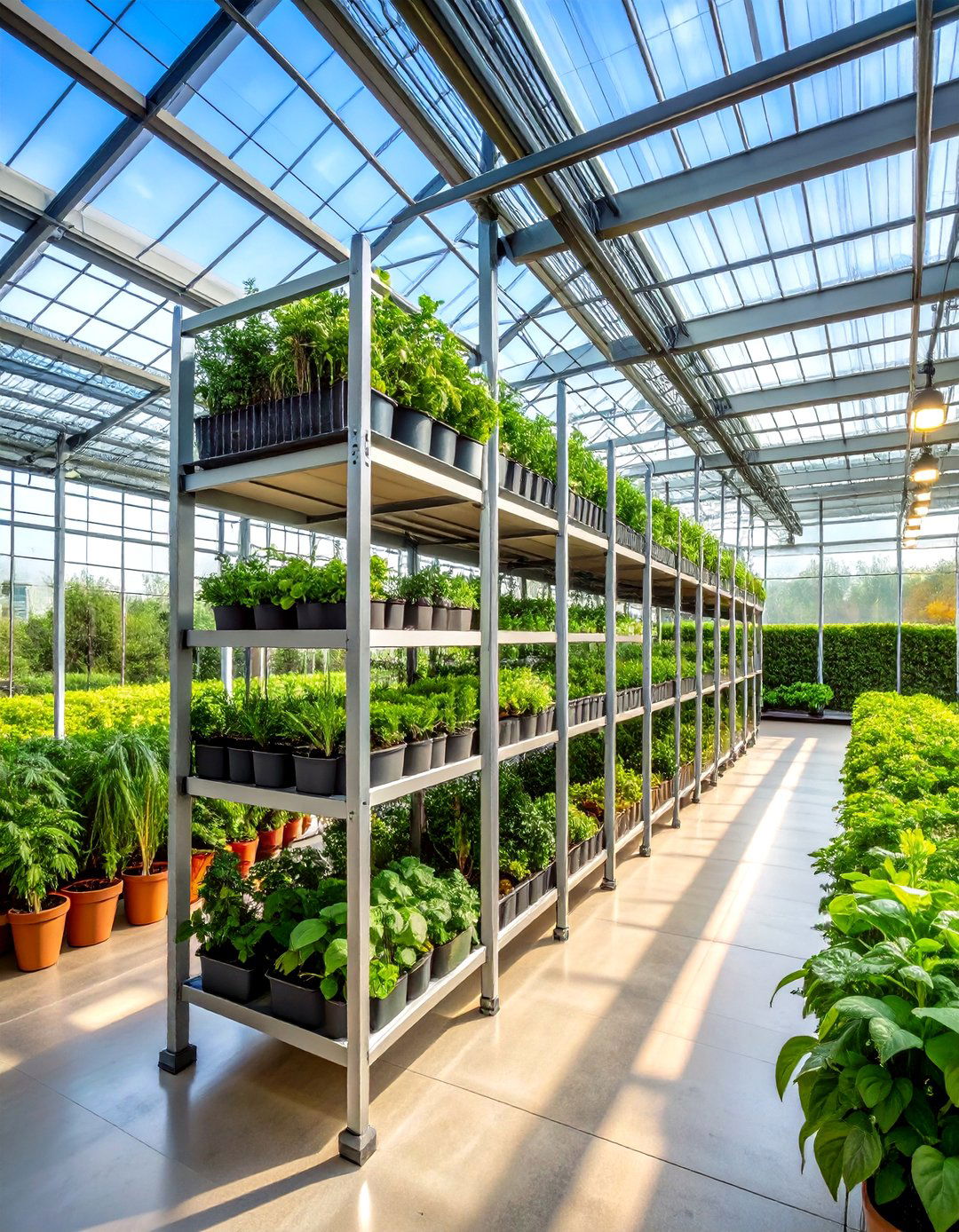
A quick route to double or triple growing area is stacking lightweight wire-mesh greenhouse shelving in vertical columns. Wire grids let sunlight filter to lower tiers and stop water from pooling, reducing fungal risk MAN about TOOLS Hoop House USA. Choose coated steel or galvanized panels rated for at least 40 kg per shelf; these resist rust and take heavy tomato tubs. Anchor uprights to frame studs with corrosion-proof brackets, then leave 30 cm between tiers so foliage doesn’t shadow friends below. Because air can circulate on every side, leaf temperatures stay steadier, trimming energy costs when vents cycle. Finish by sliding boot-tray liners under starter flats to catch drips without blocking light.
2. Recycled Pallet Greenhouse Shelving with Rustic Charm
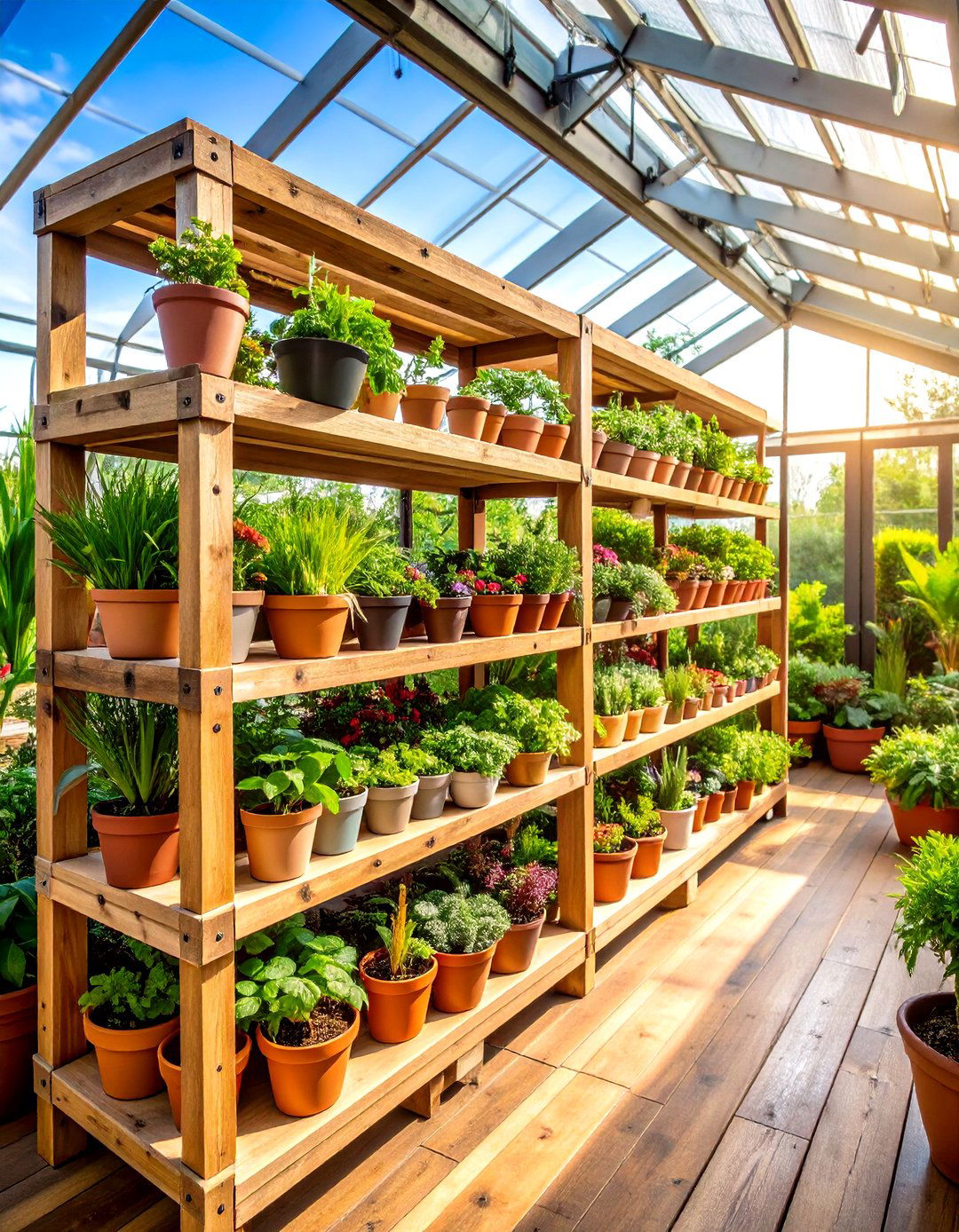
Turning retired pallets into greenhouse shelving saves cash and keeps timber out of landfills Gardeningetc. Saw off stringers to desired depth, sand rough edges, and seal with non-toxic linseed or exterior-grade paint to slow rot in humid air. The built-in slats naturally create drainage gaps, while the rugged pine can handle bags of compost or large citrus tubs. Attach legs cut from pallet blocks for a freestanding bench, or screw the pallet flat against studs for an instant cantilevered shelf. Add a plastic nursery tray beneath pots to capture runoff, and enjoy an inexpensive, upcycled staging area that still looks intentional and tidy.
3. Adjustable Aluminium Slat Greenhouse Shelving for Precision Growing

When pot sizes and seasons change, height-adjustable aluminium slat greenhouse shelving keeps pace Hartley Botanic. Slotted extrusions slide into side rails, letting you raise trays near roof glass for winter warmth or drop them low during hot spells. Aluminium shrugs off humidity, never rusts, and its pale finish reflects bonus light onto foliage. Slats leave 10-15 mm gaps, so over-head watering drains fast—vital for propagating succulents or orchids that hate wet feet. Wheelchair-friendly kits offer 60 cm-deep tiers you can adjust without tools; simply hook a shelf at the notch that matches plant height, and your staging evolves as crops grow.
4. Rope-Hung Greenhouse Shelving to Free Up Floor Space
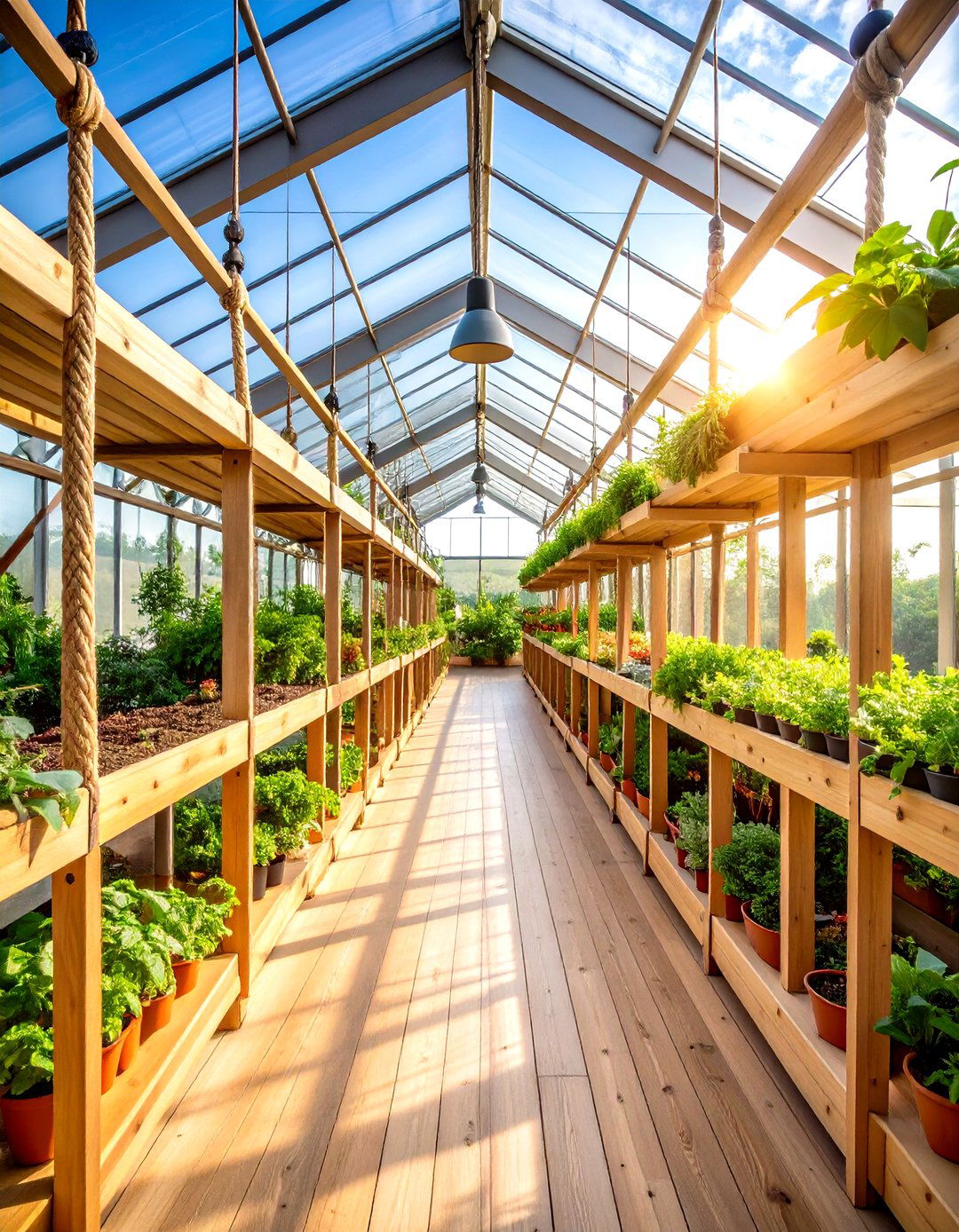
Suspending narrow cedar planks on sturdy marine rope yields airy greenhouse shelving that keeps aisles clear for carts and hoses Etsy Nova Display. Knot adjustable loops beneath each plank so you can tweak level with a tug, then secure eye-bolts through rafters rated for the load. Because shelves float, warm air rises uninterrupted and pests lose hiding spots behind legs. Choose moisture-resistant rope such as braided polypropylene, and treat wood with food-safe sealant. Light dances through the gaps, perfect for trailing herbs that benefit from gentle sway and 360-degree exposure.
5. Fold-Away Bench Shelving for Seasonal Flexibility
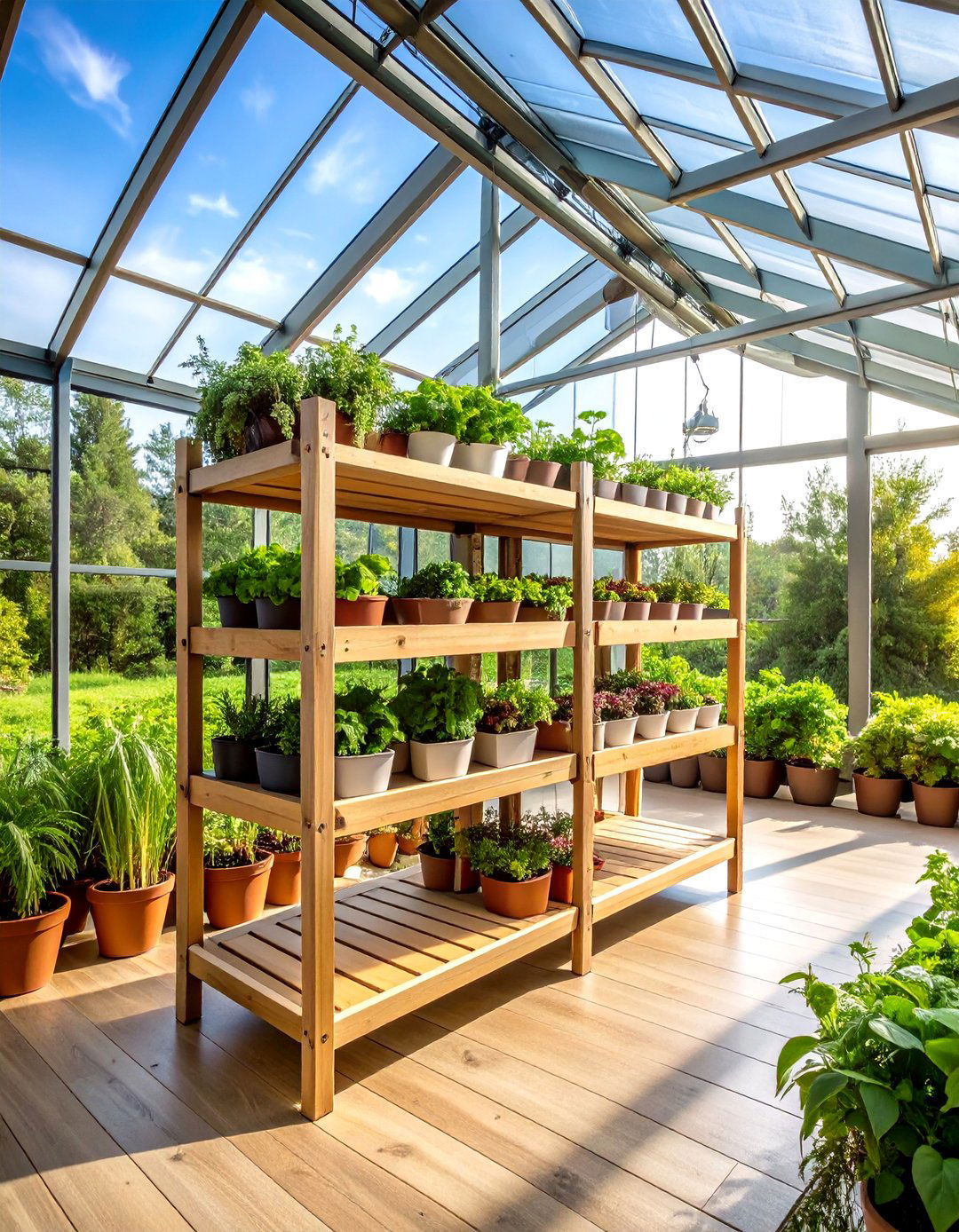
If you need potting space in spring but crave room for tall peppers later, install fold-away greenhouse shelving that drops flat against the wall Greenhouse Megastore YouTube. Hinged brackets hold a slatted top while in use; a quick lift releases the locks so the shelf folds down, giving leggy crops full headroom. Plastic-grid bench tops weigh little yet support wet soil blocks, and integrated drainage holes keep seedlings healthy. Add vinyl-capped edges to avoid snagging shade cloth, and label hinges with load ratings for safety. This convertible staging earns its keep every season without permanent footprint.
6. Rolling Cart Greenhouse Shelving for Mobile Microclimates
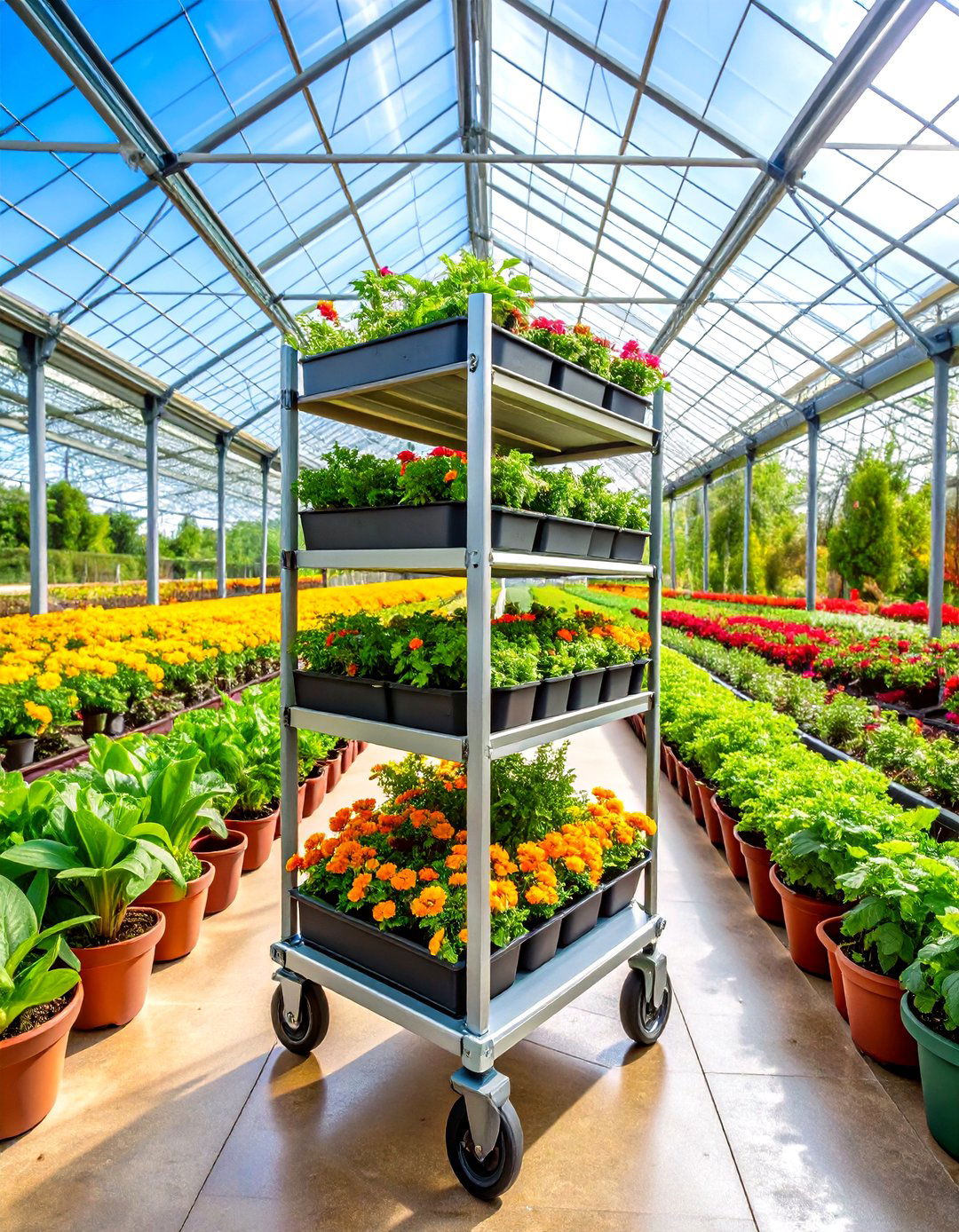
Heavy pots and seed trays glide effortlessly on a galvanized rolling cart fitted with hook-in wire shelves U.S. Global Resources |. Stout casters (5 cm rubber wheels) traverse gravel floors while perforated decks shed excess water. Use carts to shuttle tender flats into sunnier bays, group disease-prone plants for isolated treatment, or wheel entire harvests to the potting bench. Shelves adjust on 5 cm centers, so you can stack pelargoniums three high today and fit towering dahlias tomorrow. When not needed, carts nest or park outdoors, reclaiming floor space inside the greenhouse.
7. Potting-Bench Greenhouse Shelving with Tool Storage
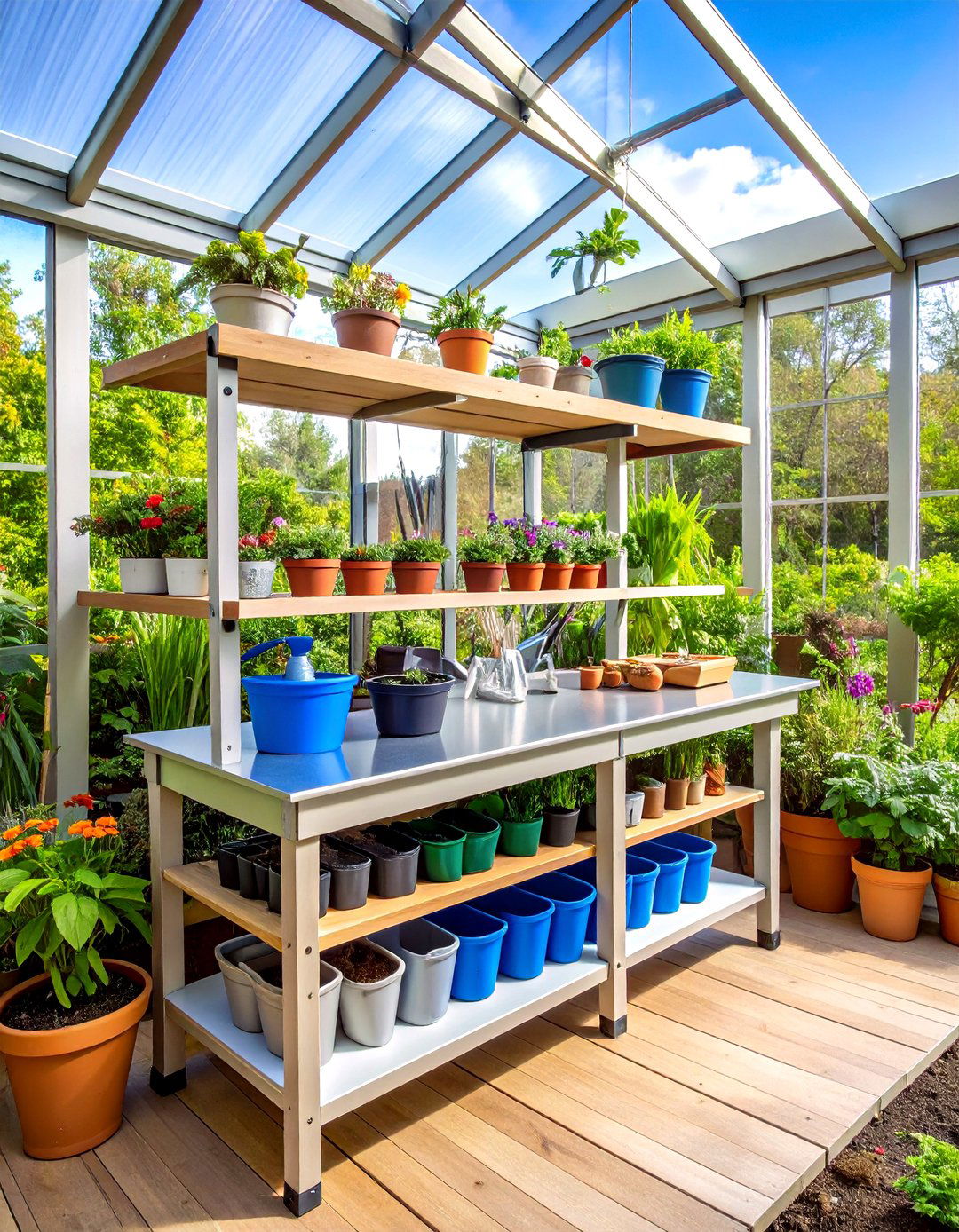
Combining a waist-high worktop with lower greenhouse shelving turns messy transplant chores into an organized ritual Foter. Choose frames of rot-resistant cedar or powder-coated steel, topped with galvanized sheet for easy bleach wipe-downs. A slatted second tier stores soil bags off damp floors, while side hooks hang trowels within reach. Add a shallow tray of perlite beneath the bench to maintain humidity around cuttings. Because everything lives in one station, you save steps and keep clutter from migrating onto plant benches.
8. Tiered Corner Greenhouse Shelving to Exploit Dead Zones
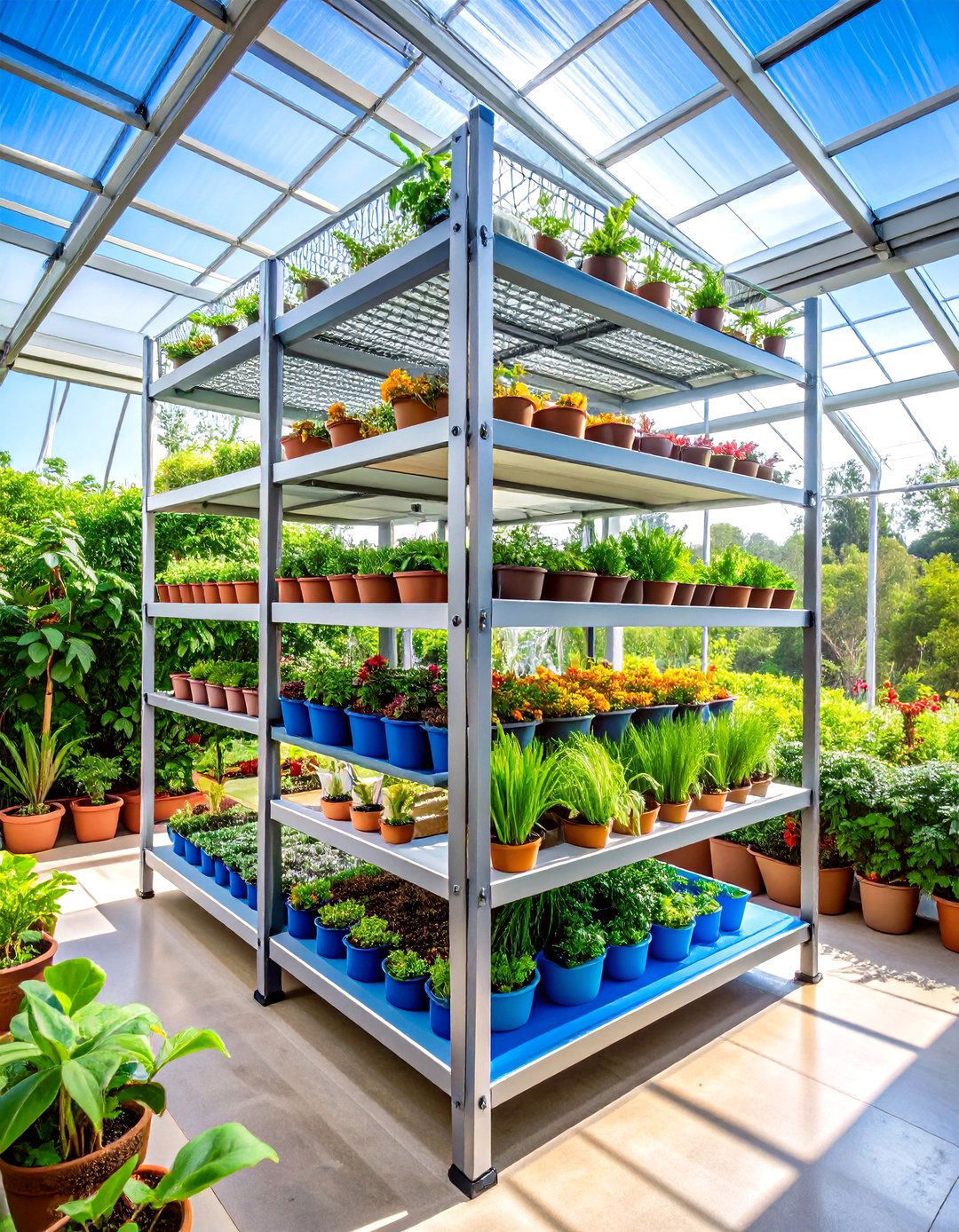
Corners often languish underused, yet a tri-level corner greenhouse shelving unit converts that 90-degree niche into prime real estate DIY Crafts. Fan-shaped platforms graduate in depth—40 cm at the base, 25 cm mid-tier, 15 cm on top—letting each layer receive unobstructed light. Mesh surfaces encourage airflow, handy for ferns that despise stagnant pockets. Anchor legs with adjustable feet to compensate for sloping foundations, and rotate trays weekly to balance growth. The result: a neat, cascading display that unlocks square meters you never knew you had.
9. Ceiling-Suspended Wire-Rack Greenhouse Shelving for Maximum Light
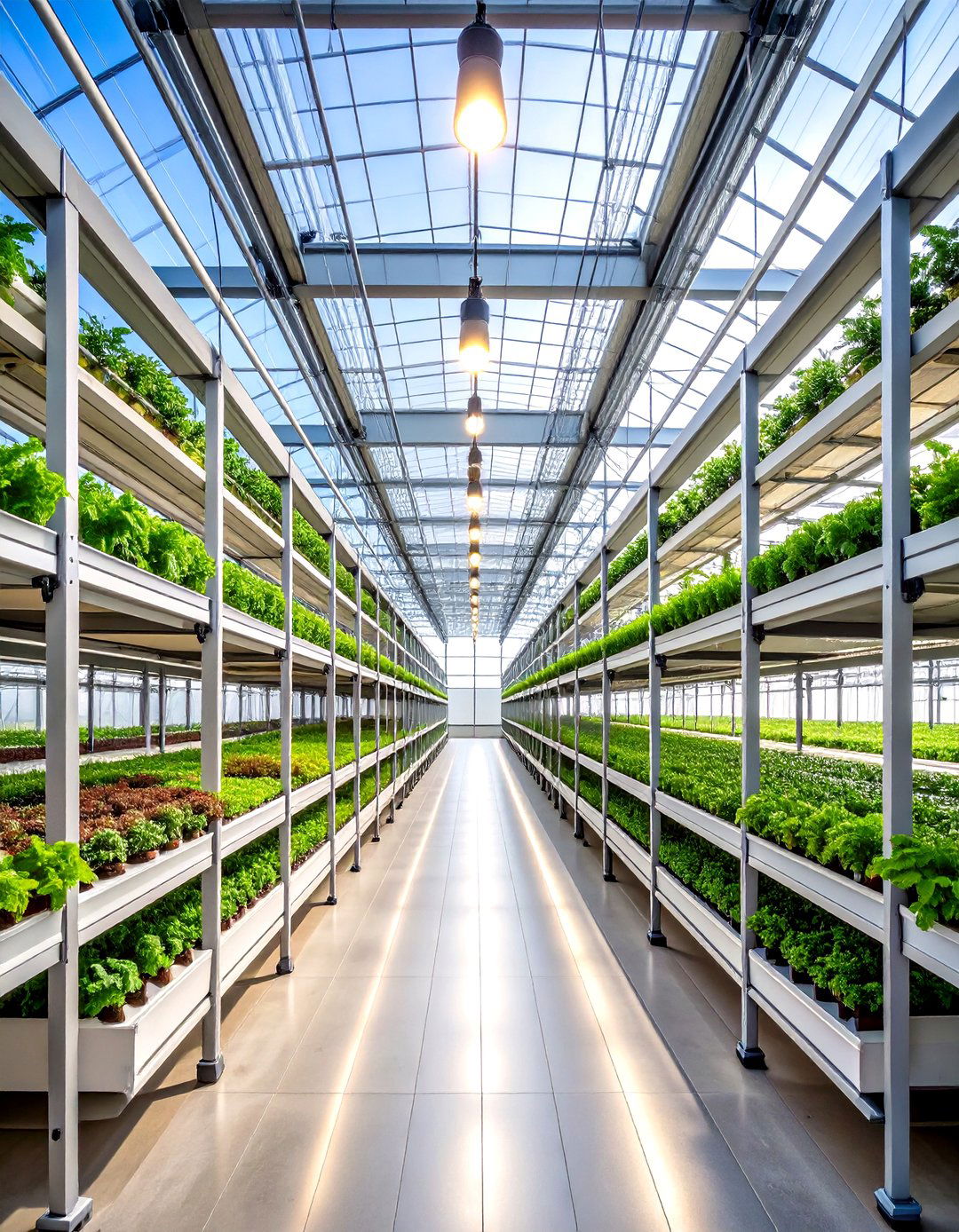
High-tension steel cables can cradle slim wire-rack greenhouse shelving just below rafters, capturing otherwise wasted vertical volume Nova Display Nova Display Systems. Kits rated to 45 kg use stainless anchors and turnbuckles so you can fine-tune pitch, preventing water roll-off. Because racks sit in the brightest zone, they’re ideal for oregano or alpine seedlings that love intense light yet require sharp drainage—both delivered by open lattice. Keep clearance of 30 cm to glass to avoid leaf scorch, and slide shade cloth over lines during heatwaves.
10. Modular Plastic-Grid Greenhouse Shelving for Quick Rebuilds
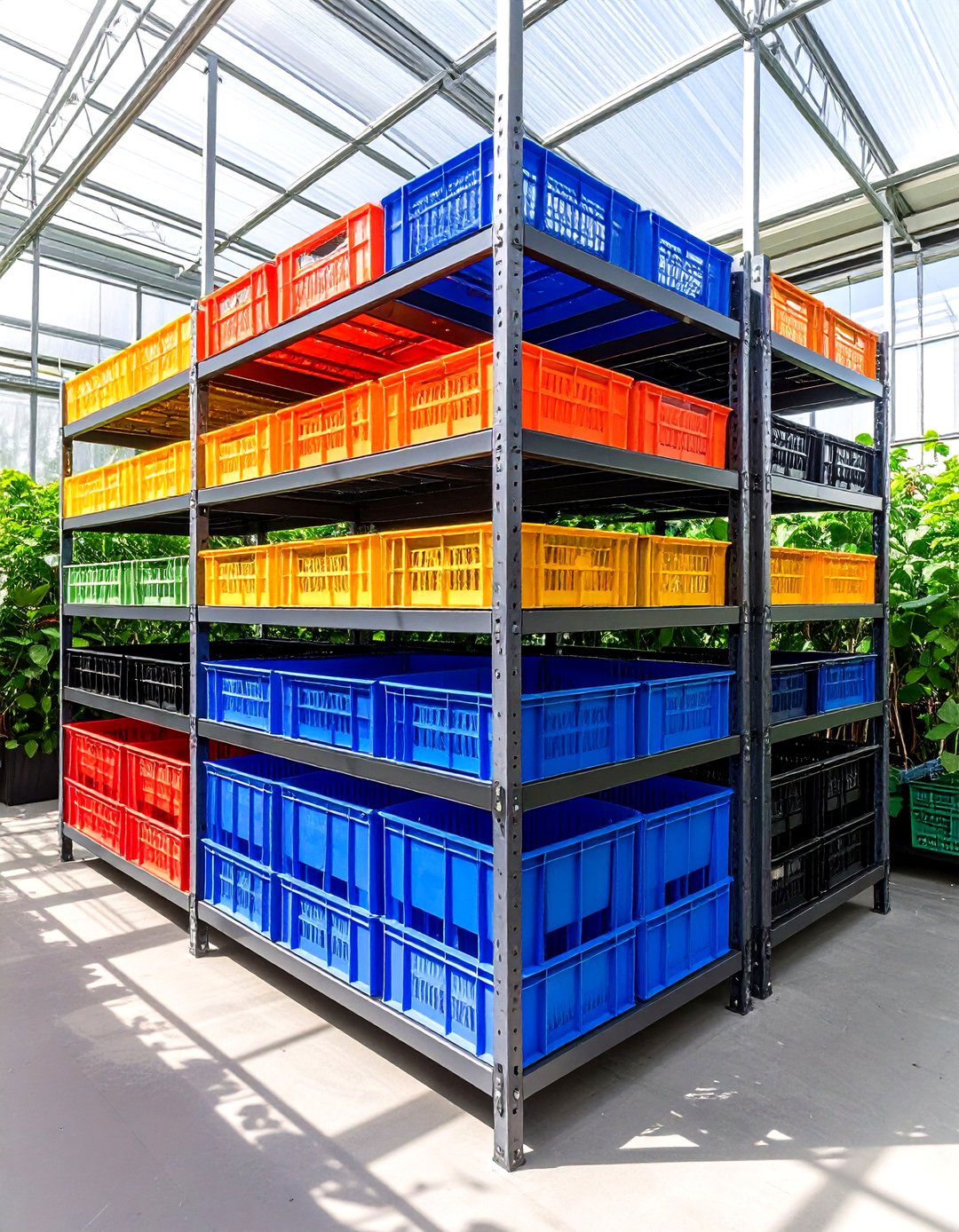
Clip-together polypropylene grids form lightweight, chemical-resistant greenhouse shelving you can assemble in minutes Greenhouse Megastore Alibaba. Each 30 × 30 cm tile snaps onto PVC posts, building towers up to five tiers tall. If a tray spills soil or roots grow through, pop off a grid, rinse, and re-attach—no tools. Plastic resists fertilizer salts better than wood, making it perfect for hydroponic buffer tanks underneath. Bright colors also help spot pests early. When seasons shift, re-design the layout like building blocks, zero waste.
11. Rain-Gutter Hydroponic Greenhouse Shelving for Water-Wise Veggies
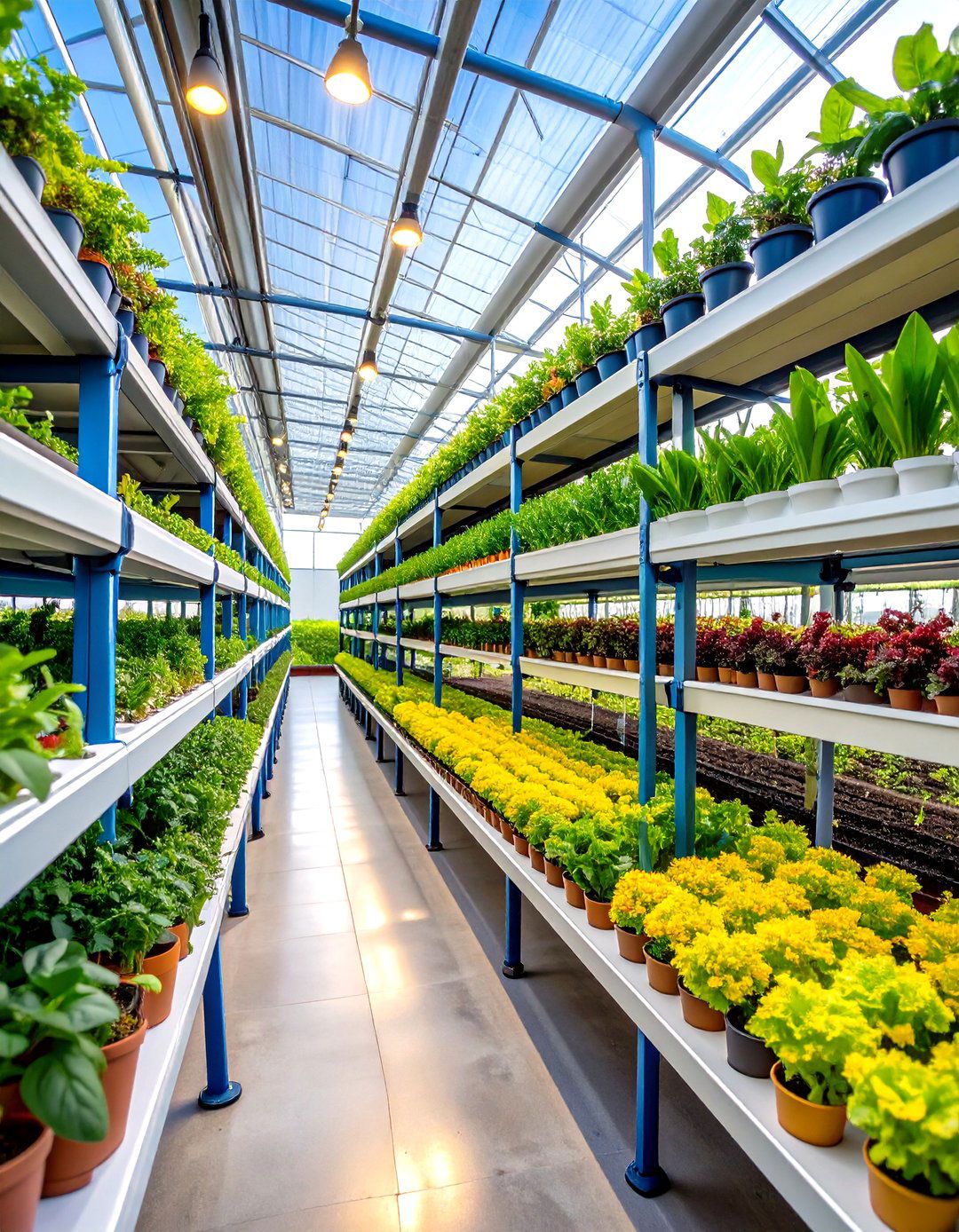
Mounting vinyl downspouts horizontally on brackets creates a slim rain-gutter greenhouse shelving system that doubles as a nutrient film channel YouTube Instructables. Drill net-cup holes every 20 cm, slope gutters 2 % toward a reservoir, and pump enriched solution for lettuce or strawberries. Gutter lids reflect light onto foliage, while enclosed sides curb algae. Because channels are only 10 cm deep, they fit above traditional benches without blocking light. The recirculating design slashes water use by up to 90 % compared with soil culture—ideal in drought-prone regions.
12. Heavy-Duty Metal-Mesh Greenhouse Shelving for Oversize Pots
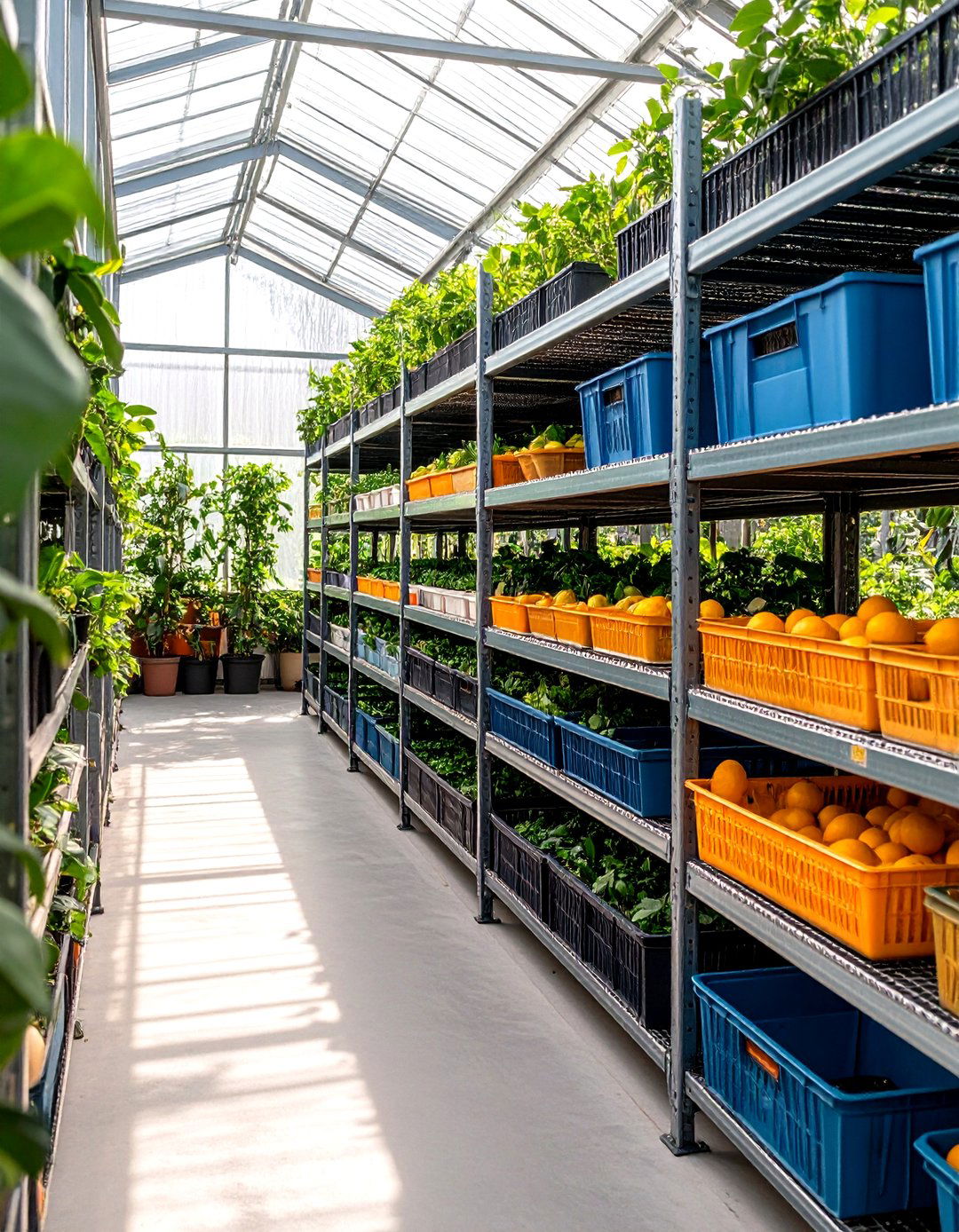
For citrus tubs or rain barrels in training, opt for welded metal-mesh greenhouse shelving rated beyond 100 kg MAN about TOOLS. Look for 6 mm crosswires spaced 2 cm apart so wheels don’t snag but drainage stays brisk. Coat frames with hot-dip galvanizing to withstand fertilizer splash. Bolted gussets at each joint fight racking when the shelf bears uneven weight. Pair with low plastic catch trays to reclaim gray water for ornamentals outside, making every drop count.
13. Wooden Slatted Greenhouse Shelving for Natural Airflow

Nothing beats the warm look and breathability of wooden slatted greenhouse shelving DIY Crafts DIY Crafts. Leave 10 mm gaps between laths so mist drains fast and cool air rises, reducing botrytis on foliage. Choose rot-resistant larch or treated pine, and elevate legs on plastic feet to stop wicking. A quick coat of organic tung oil each autumn keeps boards supple. Because wood moderates temperature swings better than metal, it’s gentle on orchids or sensitive seedlings that dislike cold shock overnight.
14. Glass-Pane Greenhouse Shelving to Flood Lower Tiers with Light
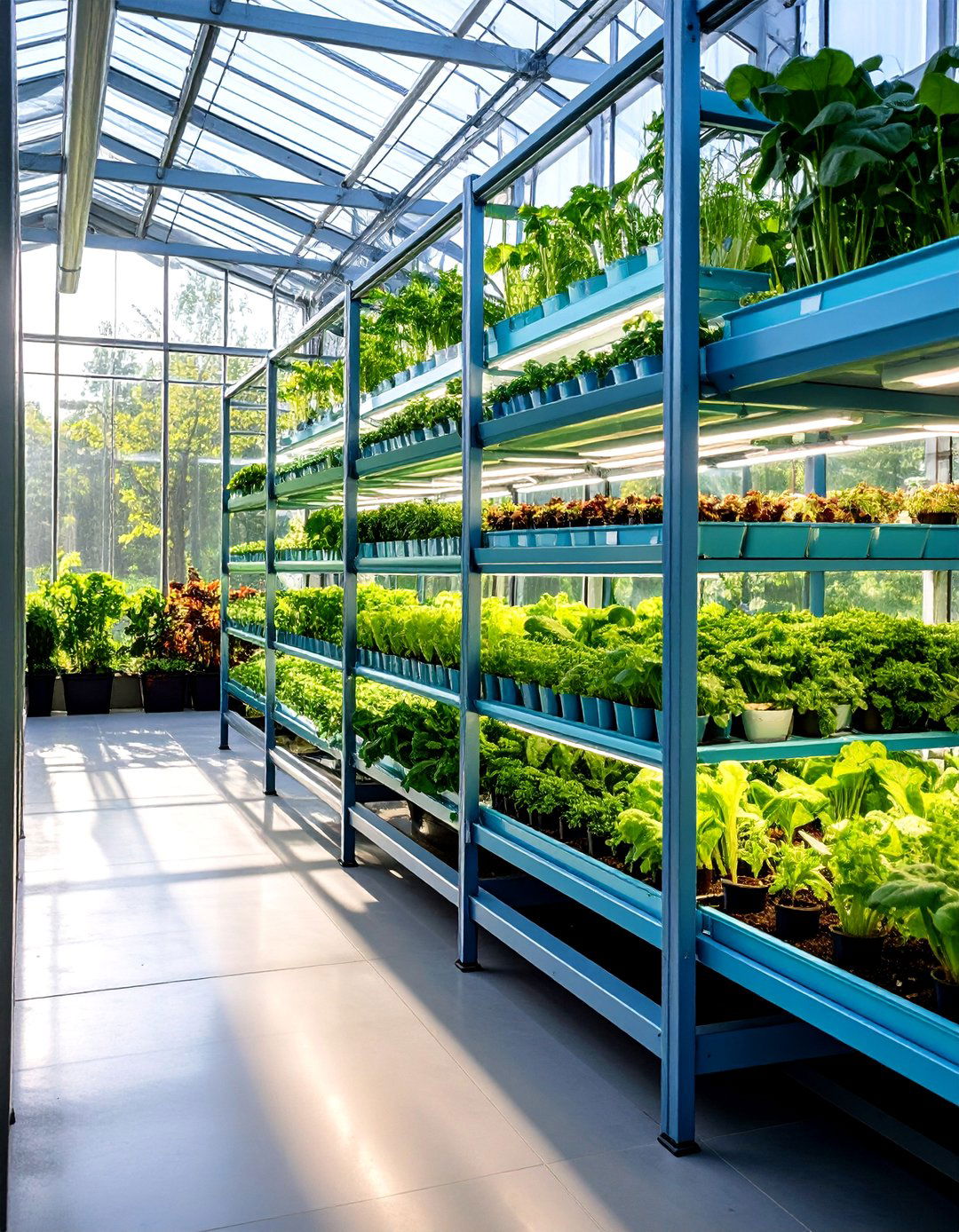
Swapping opaque boards for tempered-glass greenhouse shelving ensures every level bathes in rays, key for compact cabinets or lean-tos Mars Hydro EU. Clear panes transmit up to 85 % of visible light, so lettuces thrive even on bottom tiers. Silicone bumpers protect edges, while discreet metal clips secure corners without shading. Wipe condensate daily to avoid slip hazards. Because glass neither rusts nor stains, it stays photo-friendly for cuttings—and you can spot pests crawling underneath at a glance.
15. Galvanized-Steel Tray Greenhouse Shelving with Built-In Drain
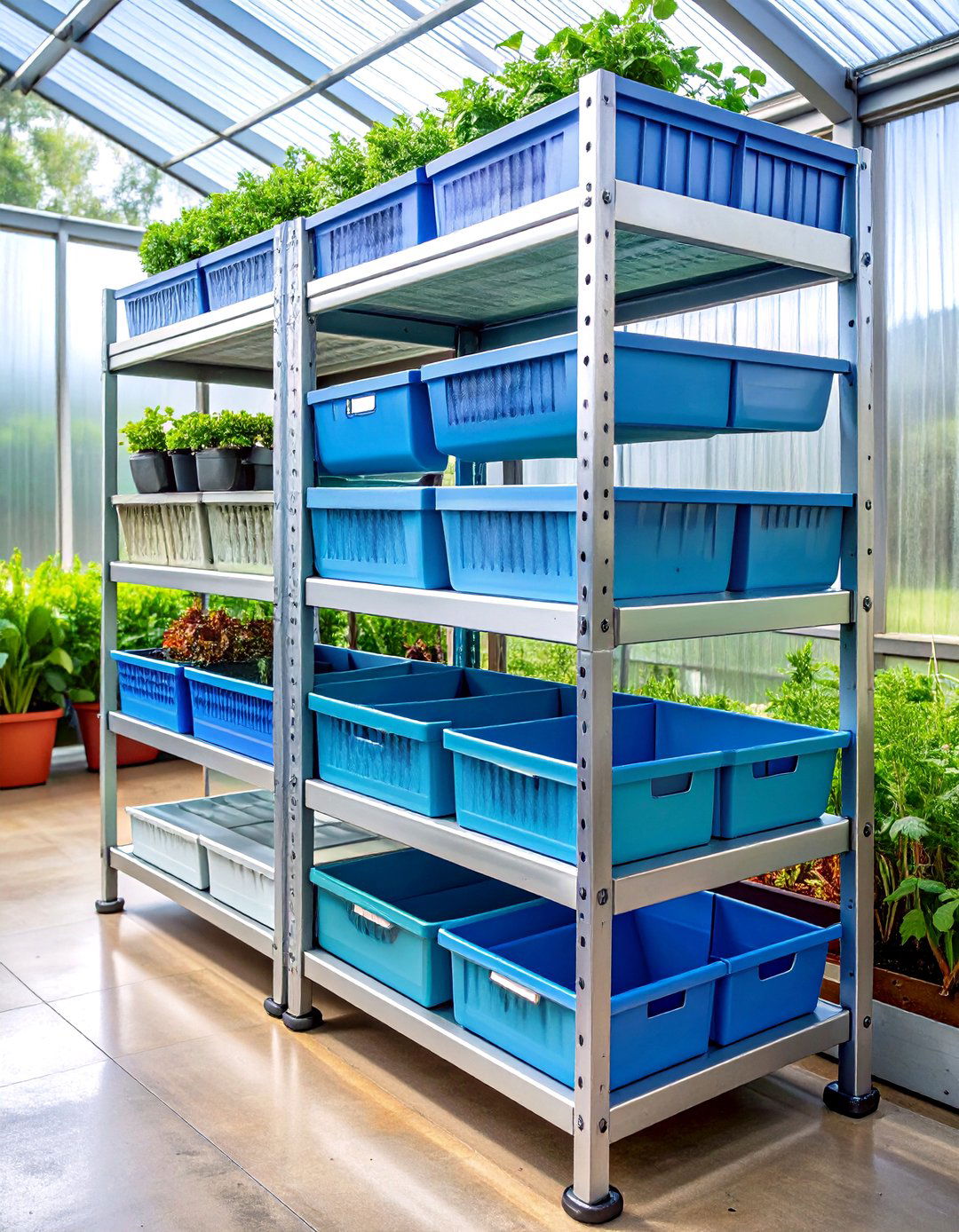
Staging that pairs galvanized-steel trays with slight lip and pre-drilled holes delivers greenhouse shelving ready for hose-down cleaning. Water and soil funnel through, drop into a gutter or gravel trench, and exit the house, preventing algae from creeping across floors. Steel’s zinc layer resists acids in peat-based mixes, offering decades of use. Match tray width (usually 60 cm) to standard seed flats to avoid tipping and slide-out accidents. For extra insurance, bed anti-slip mesh inside trays.
16. Floating Wall-Mounted Greenhouse Shelving for Sleek Displays
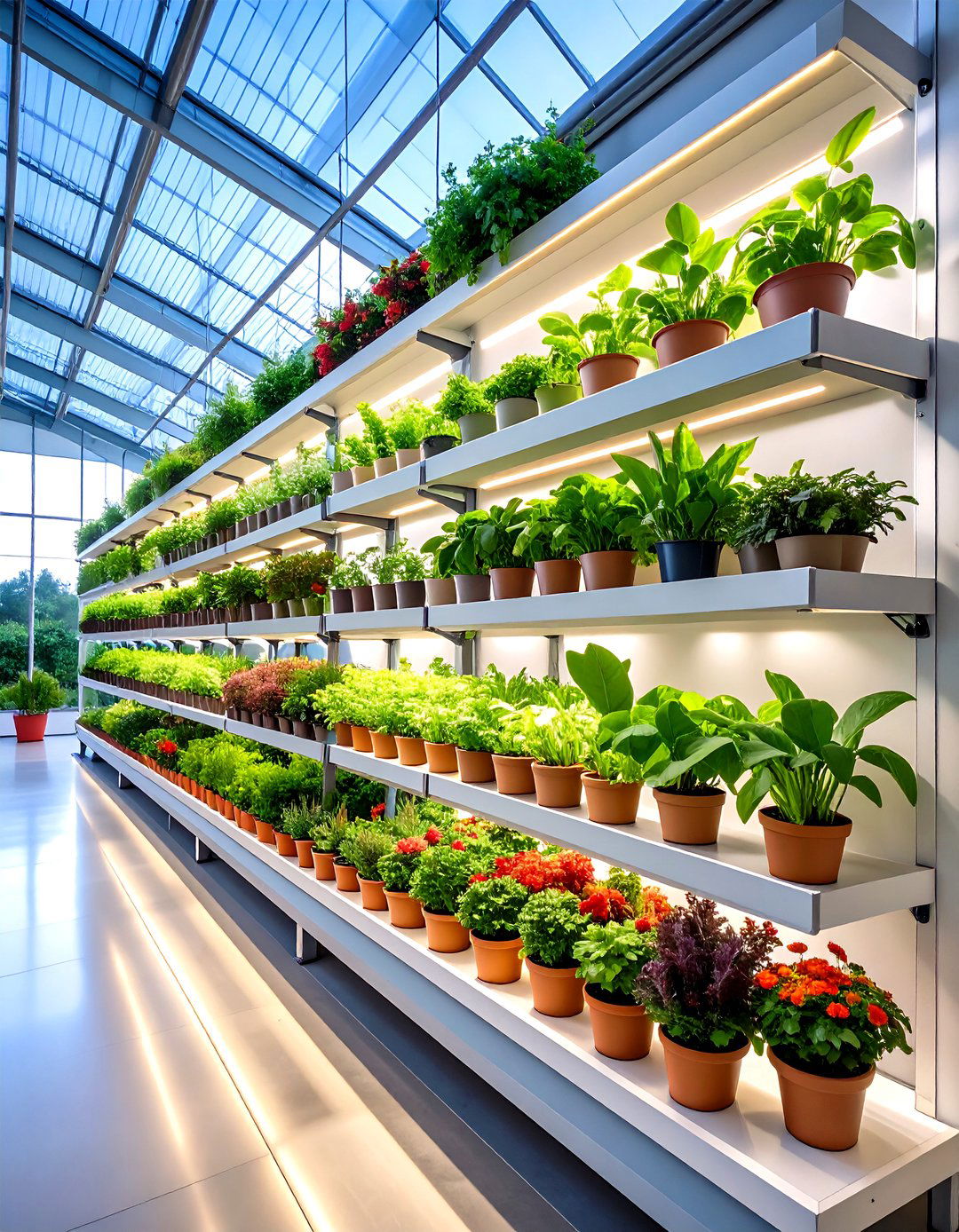
Cantilevered brackets hidden inside masonry bolts create floating greenhouse shelving that shows off sleek pots like gallery art Nova Display Nova Display Systems. Use moisture-stable composite boards finished with UV-resistant coating, and space shelves 40 cm apart for visual rhythm. Without visible supports, shadows shrink and plants bask in unbroken beams. This setup excels for specimen succulents that deserve center stage yet demand impeccable drainage—easy, because you can wipe spills straight into a discreet tray below.
17. Heat-Mat-Ready Greenhouse Shelving for Rapid Germination
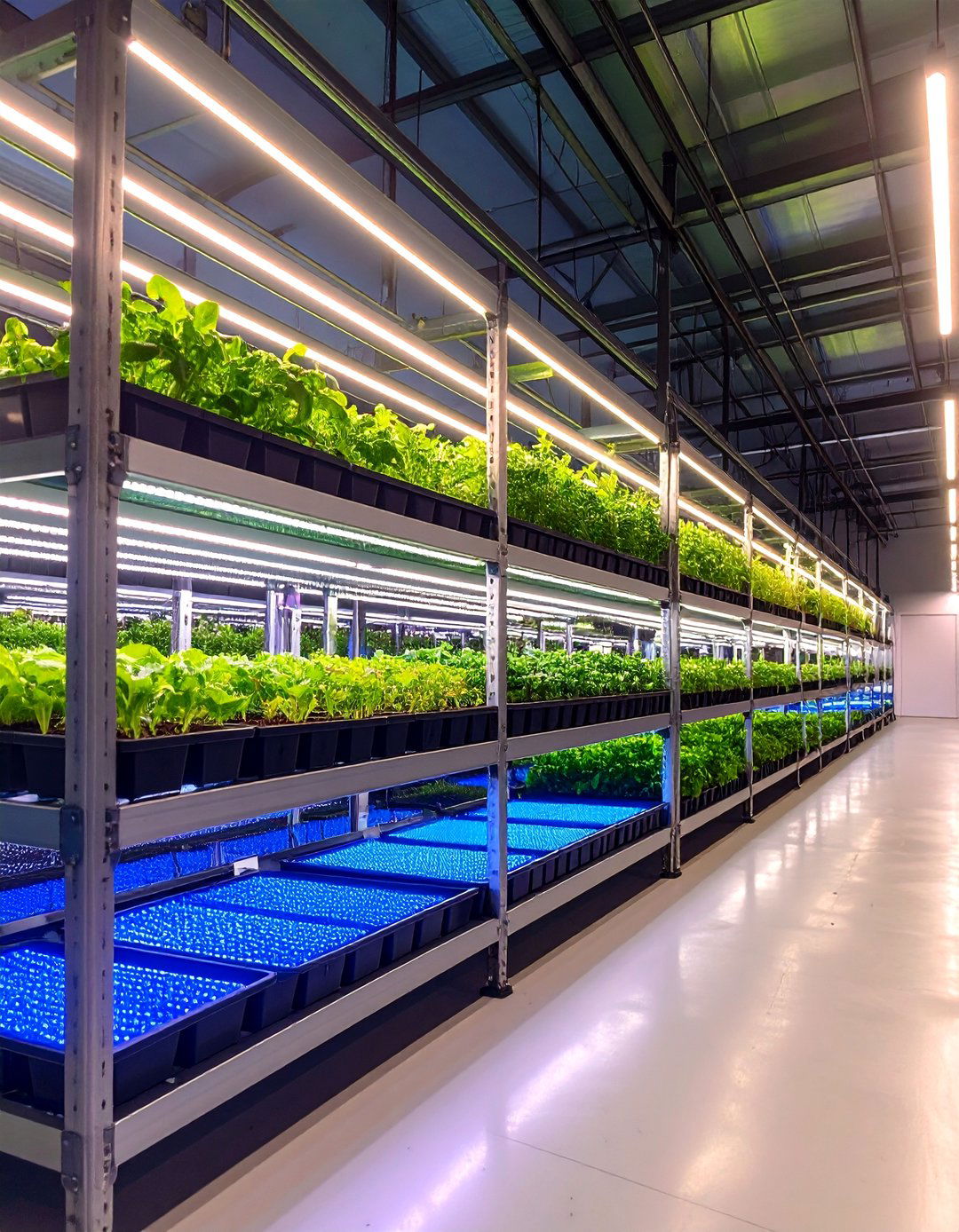
Integrating thermostatic heat mats under seed flats on lower greenhouse shelving jump-starts germination by maintaining 20–25 °C soil temperatures Greenhouse Megastore THE COTTAGE PEACH. Install GFCI outlets nearby and route cords through cable clips to prevent tripping. A probe buried in media regulates the mat, ensuring peppers sprout days sooner and at higher uniformity. Because mats sit on metal or plywood panels under trays, warmth rises evenly; once cotyledons appear, unplug to avoid leggy growth. Label mats by wattage for quick swaps when seasons change.
18. Convertible Staging Table-Shelf Hybrids for Peak Versatility
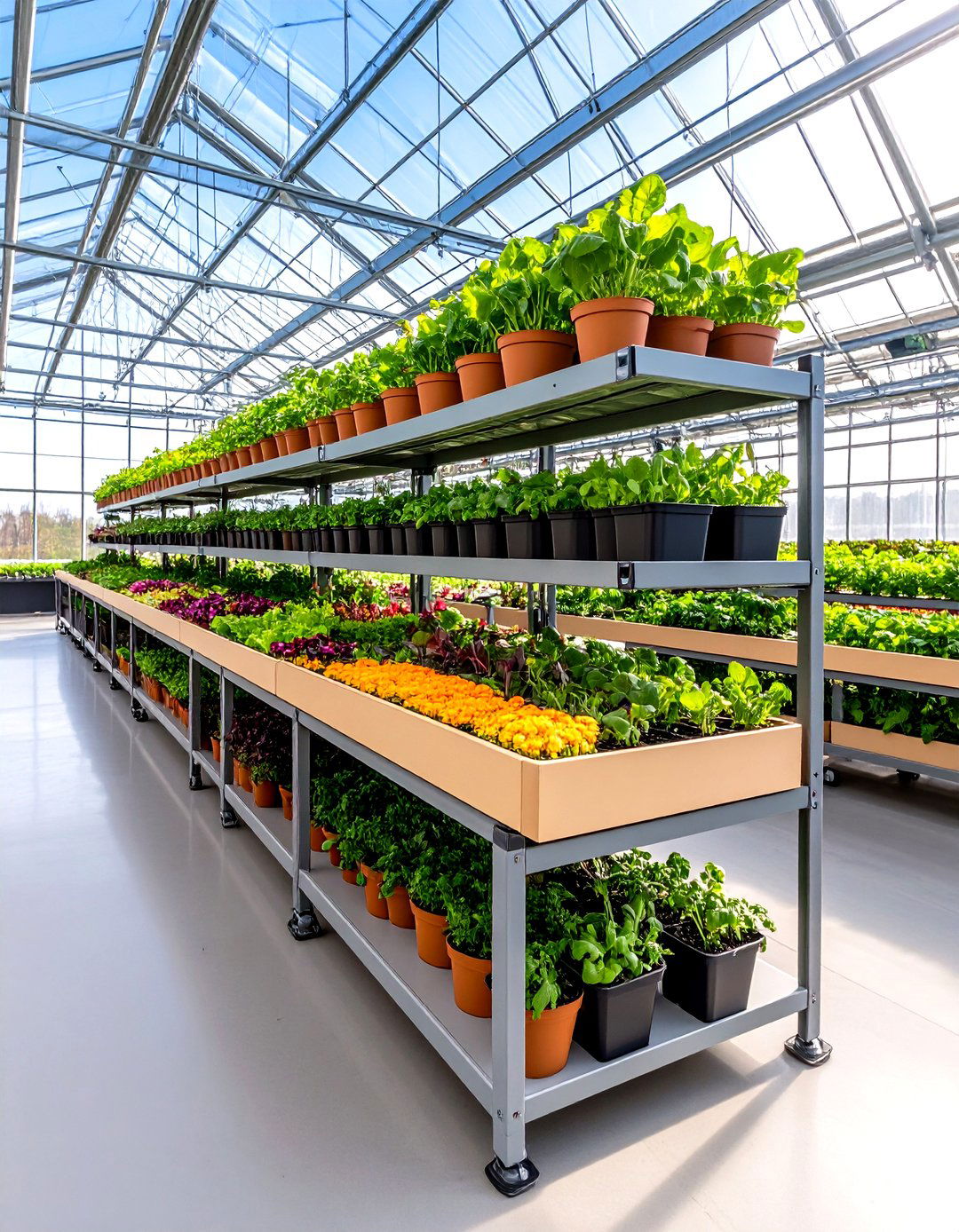
Some bench systems transform from flat potting tables into tiered greenhouse shelving by sliding lattice inserts into side grooves Greenhouse Megastore. During early spring, run the surface flat for transplanting and soil mixing; later, drop the inserts to create two or three grilled shelves for growing on. Heavy-duty plastic tops with 13 mm drainage holes clean fast, and leg extensions snap off for winter storage. This hybrid design reduces furniture count and adapts as crop cycles evolve.
19. Stackable Seed-Tray Greenhouse Shelving for Mass Propagation
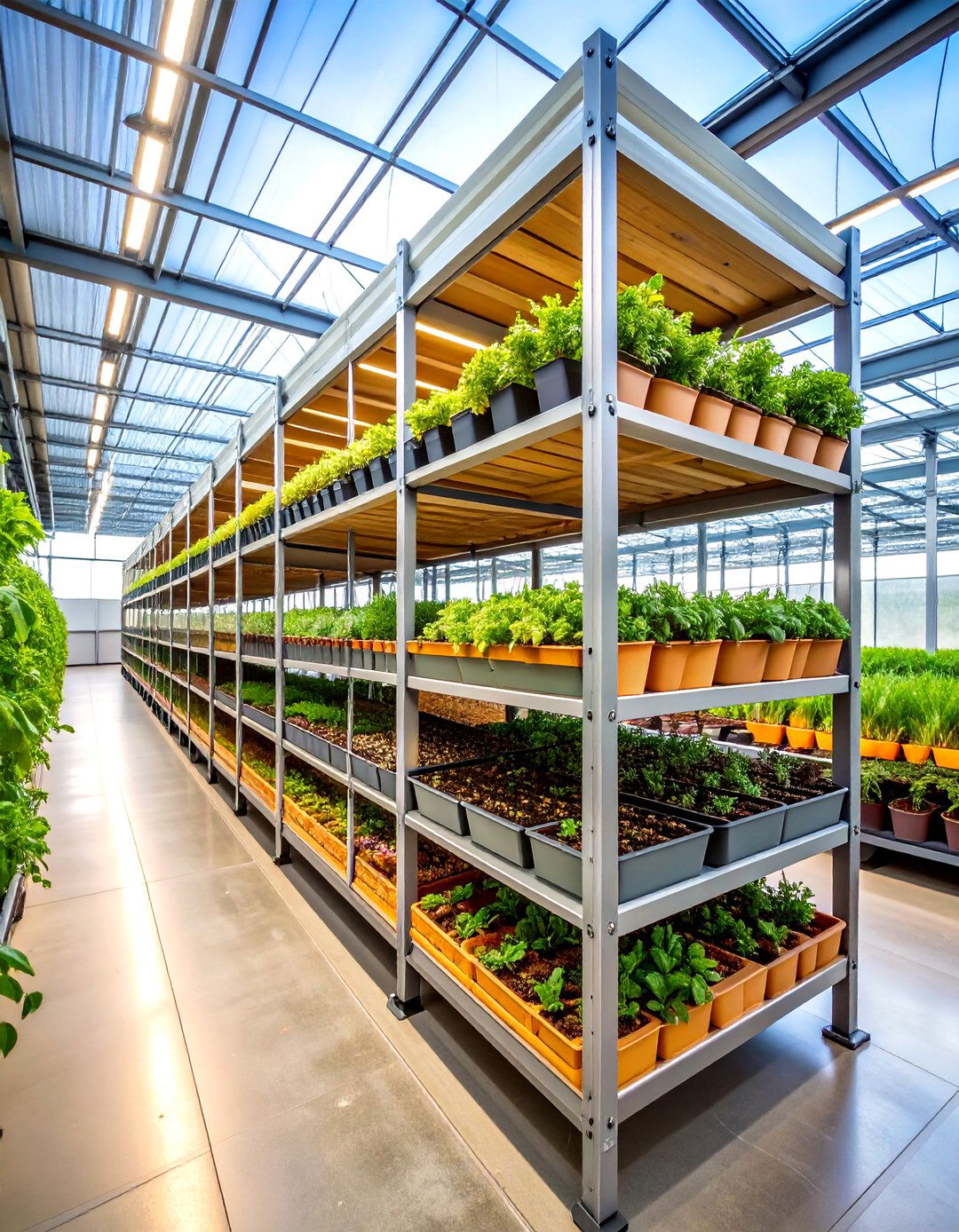
Vertical seed-rack greenhouse shelving can hold fifteen 1020 trays in the footprint of three Rhino Greenhouses Direct - UK. Aluminium uprights slot into keyed holes every 3 cm, letting you fine-tune distance to canopy height. Wire-grid shelves rest on shelf rests set 3 cm apart, delivering balanced airflow that curbs damping-off. Because racks dismantle without fasteners, sterilizing after each propagation round is effortless—just lift, dip in peroxide, and reinstall. Wheels optional, but handy if you chase sun rays across the house.
20. Drip-Tray Greenhouse Shelving with Built-In Water Catchment
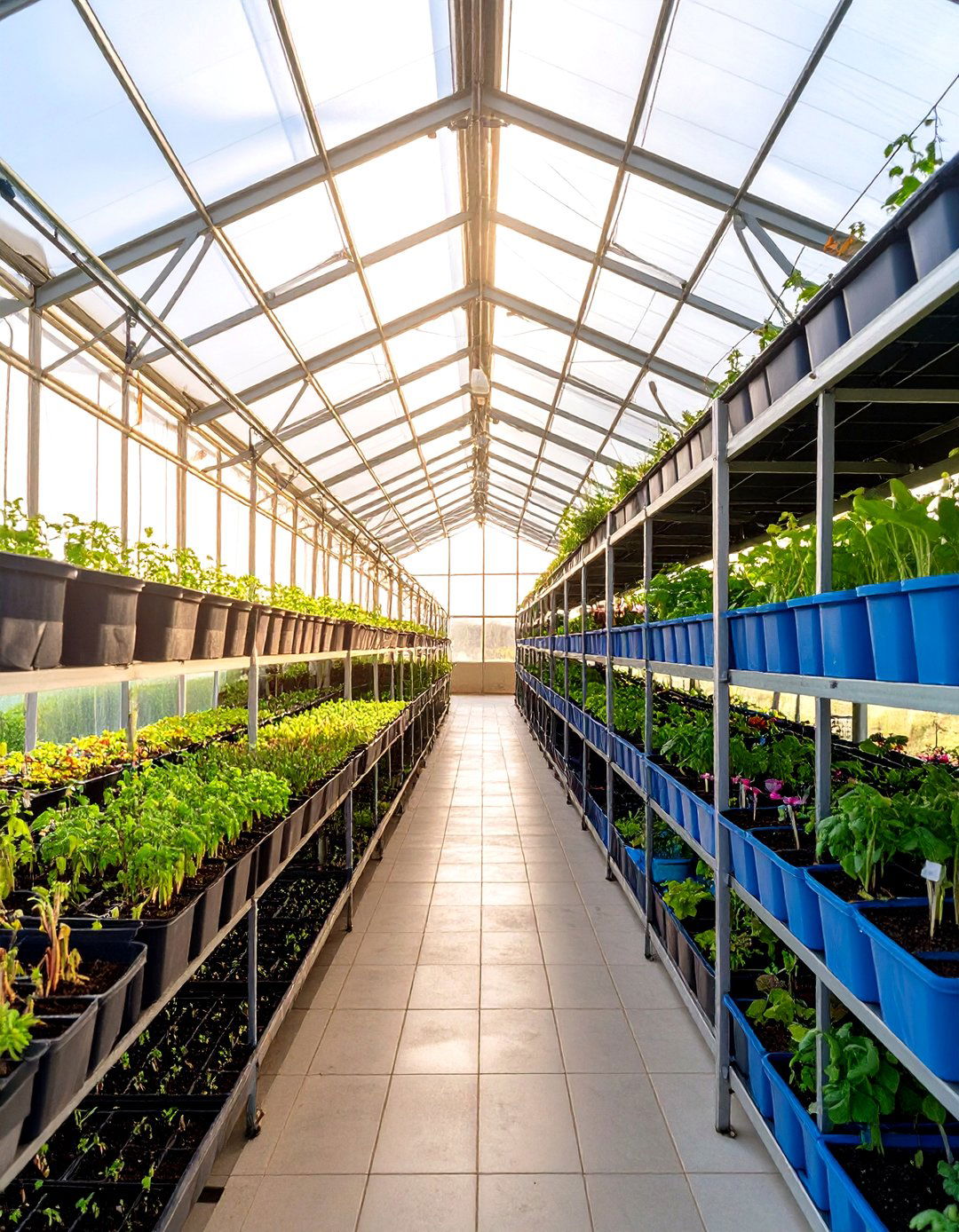
To recycle irrigation and keep floors dry, fit greenhouse shelving over sloped plastic drip trays that channel run-off to a barrel. Wire benches perch 5 cm above trays, letting excess water drain instantly while humidity around foliage rises—great for tropicals. A simple hose barb at tray corner feeds collected nutrient back into watering cans, closing the loop. Clean trays monthly with mild bleach to thwart algae, and you’ll capture liters otherwise lost to evaporation.
Conclusion:
Thoughtful greenhouse shelving turns mere structure into a living ecosystem: vertical grids flood tiers with light, slatted wood breathes, galvanized trays shed water, and drip-catch designs conserve every drop. Mix and match the ideas above to match crop goals, climate quirks, and budget, and your greenhouse will reward you with healthier plants, safer workflows, and an organized space that grows right alongside your horticultural ambitions.




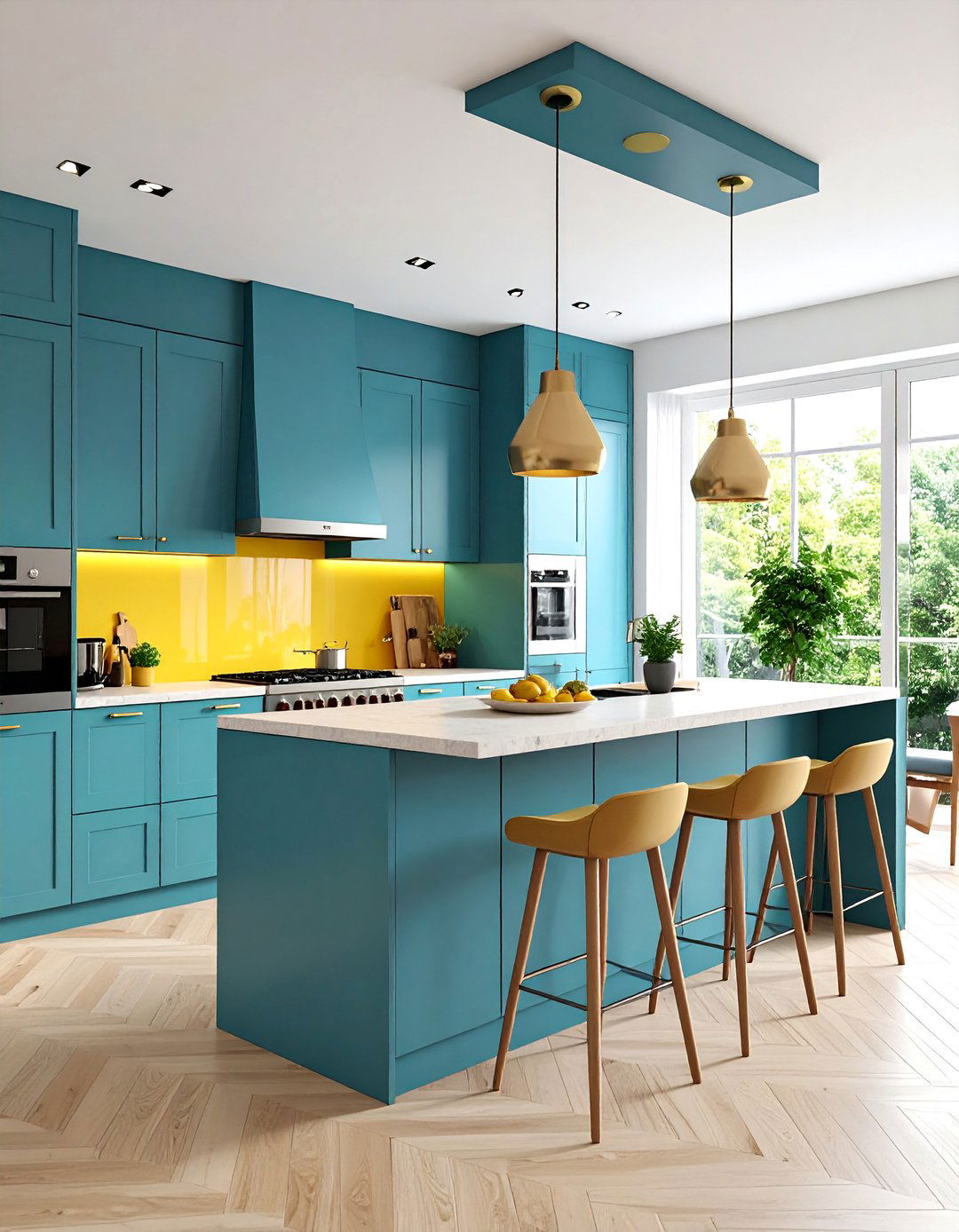
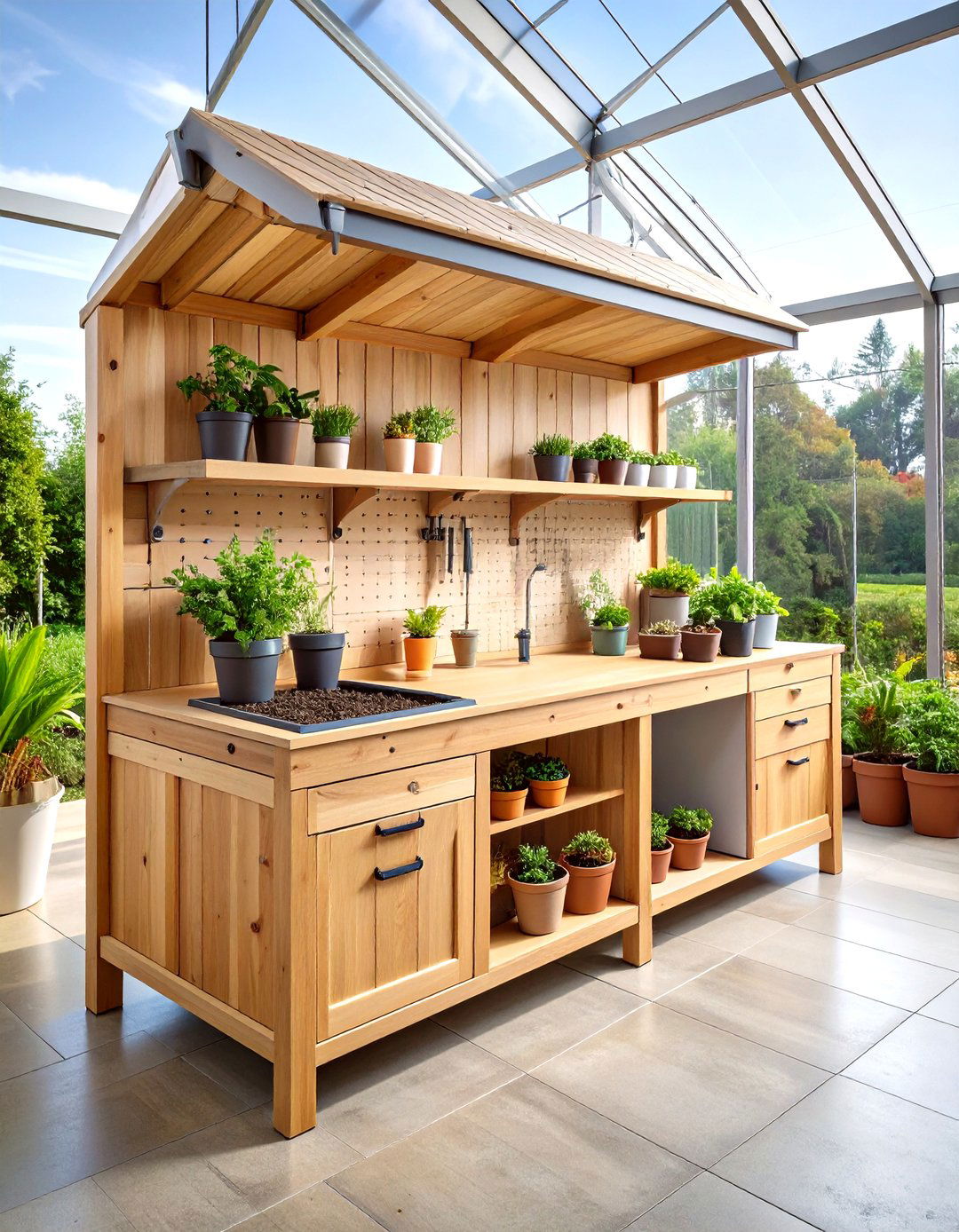
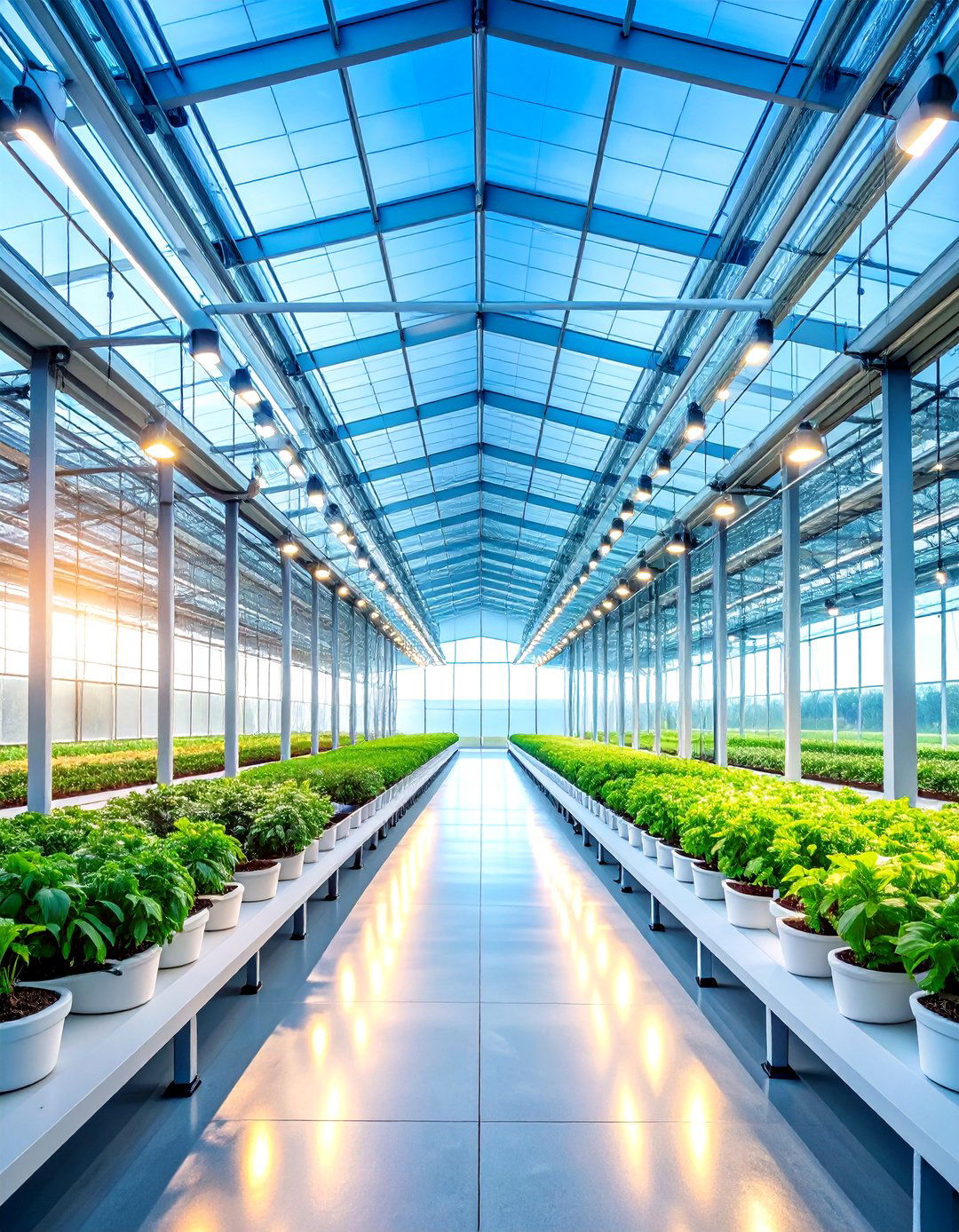
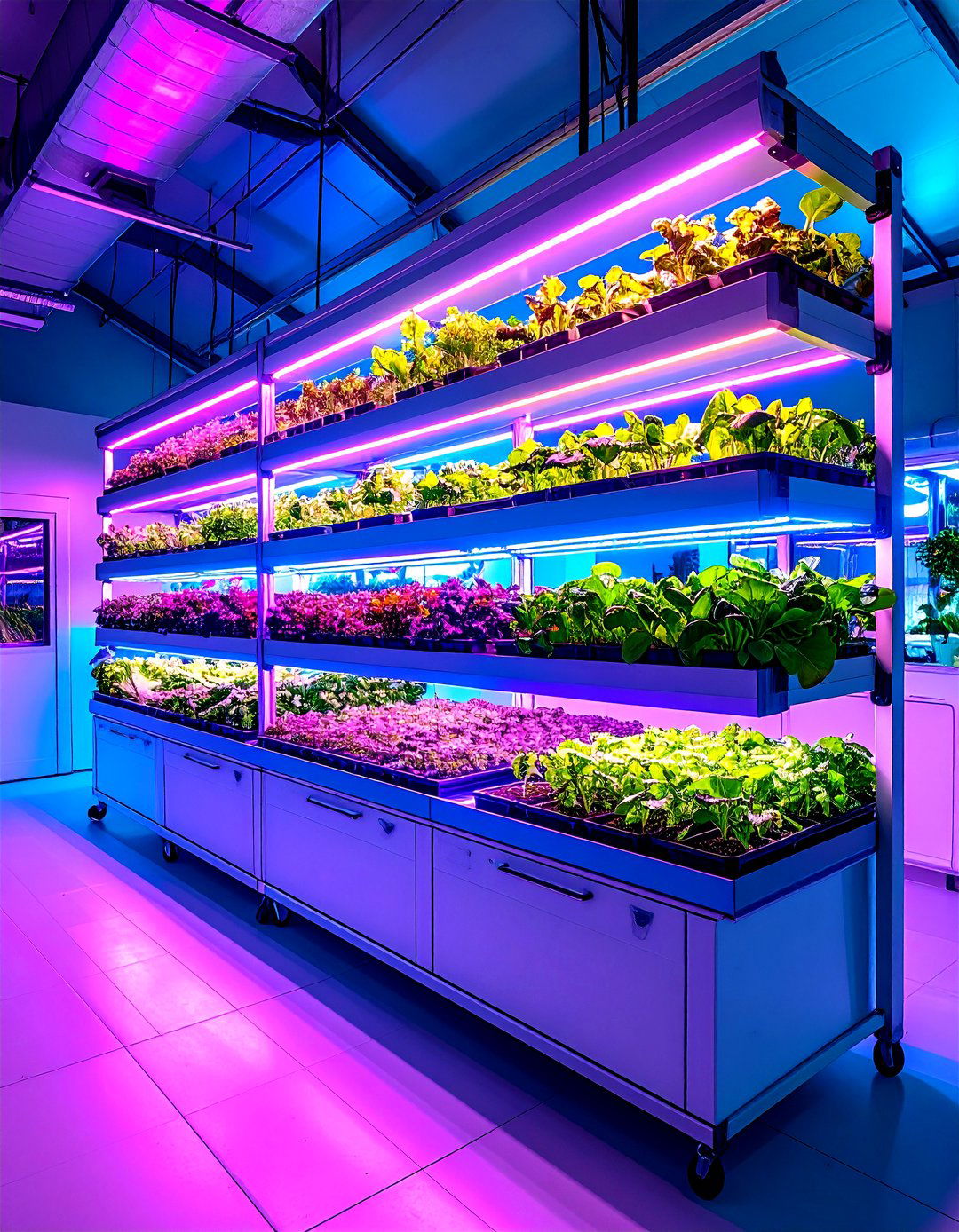
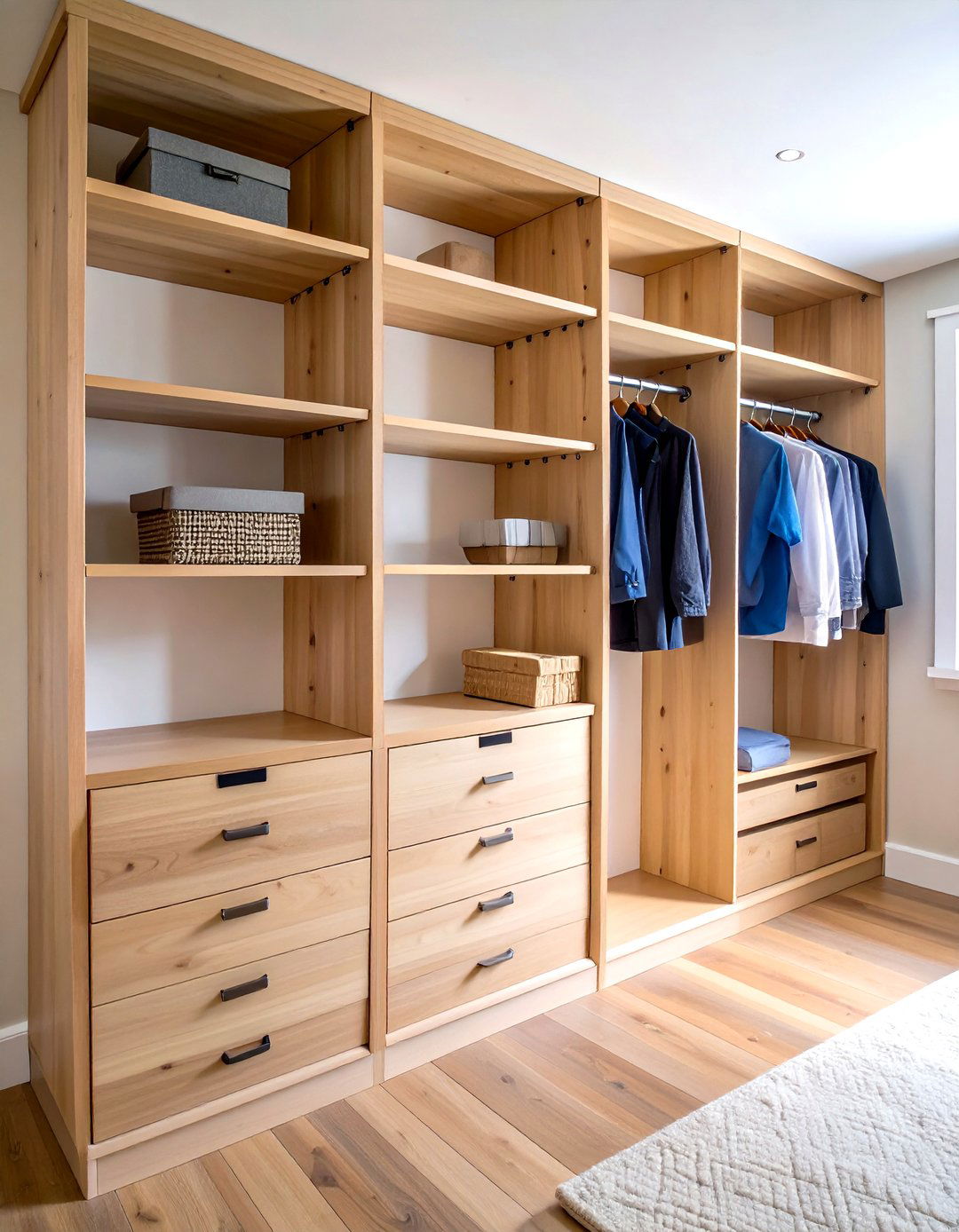
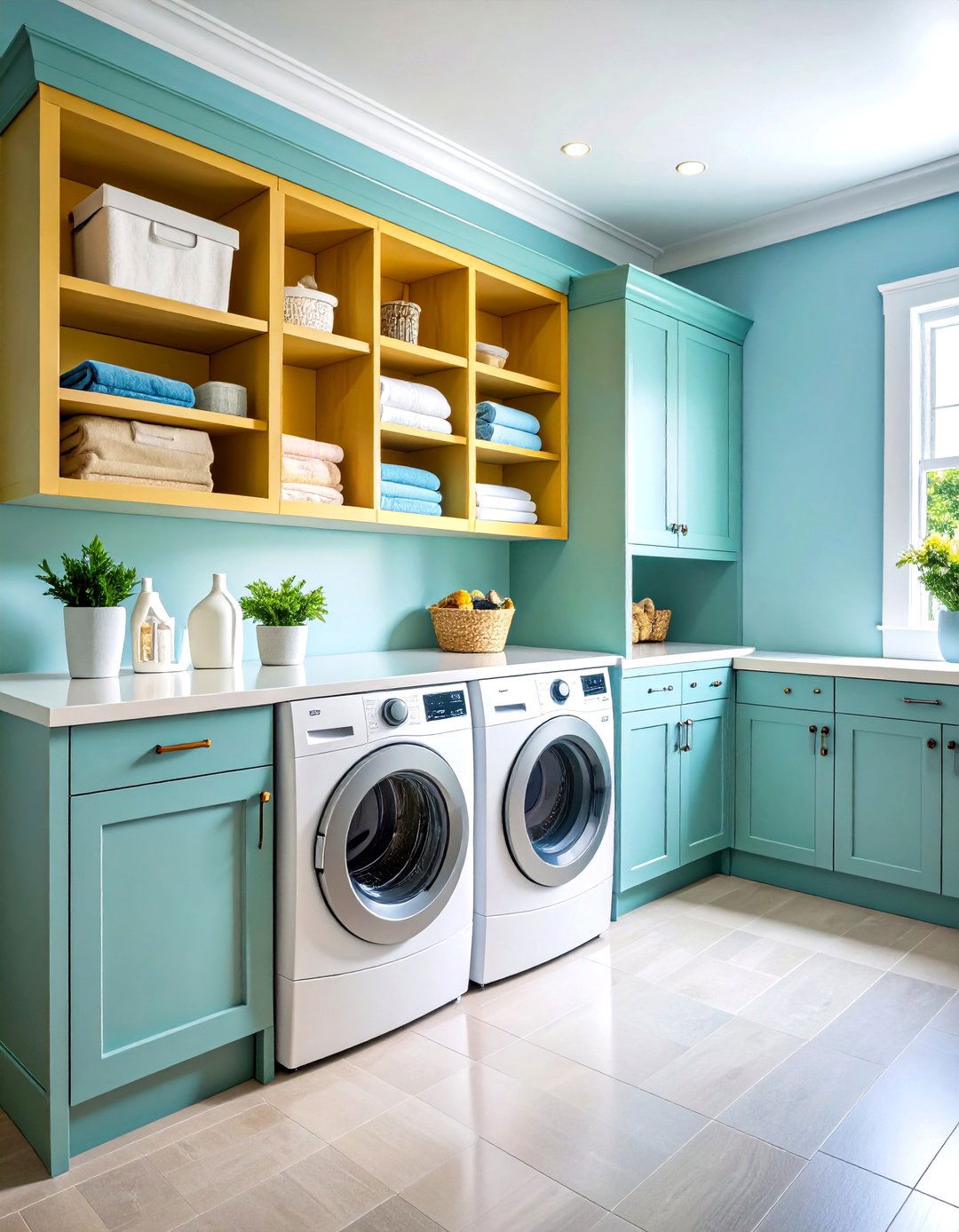
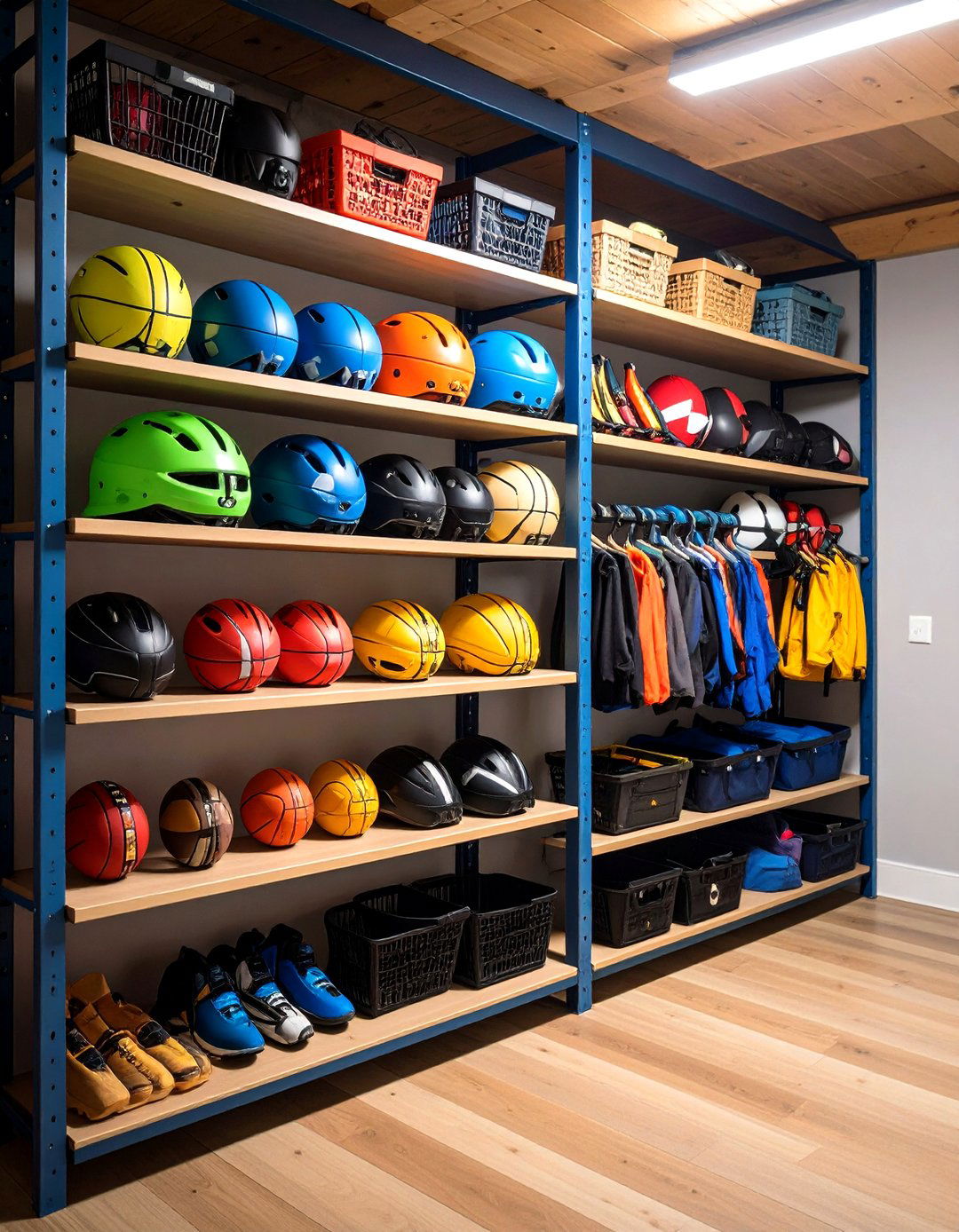
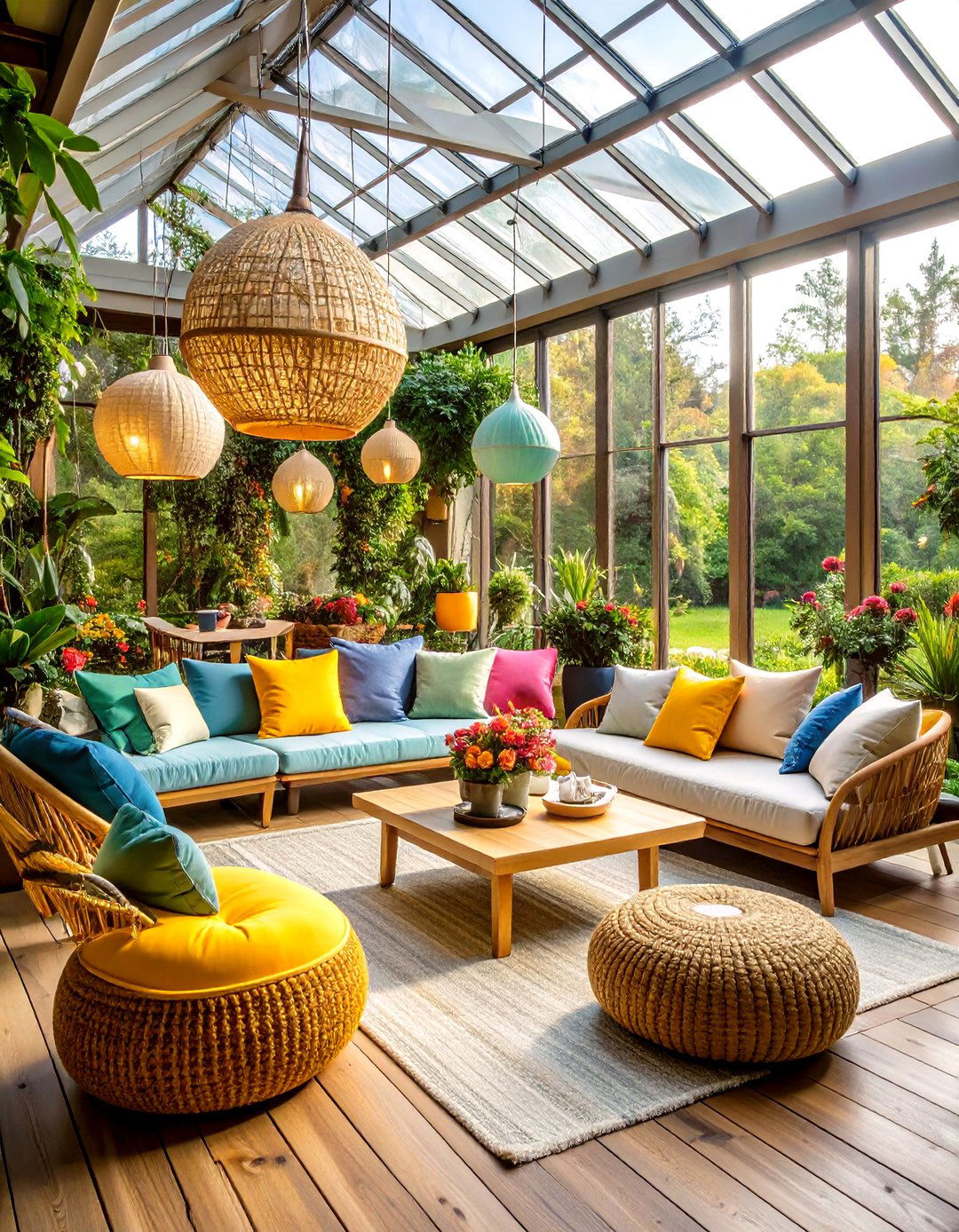
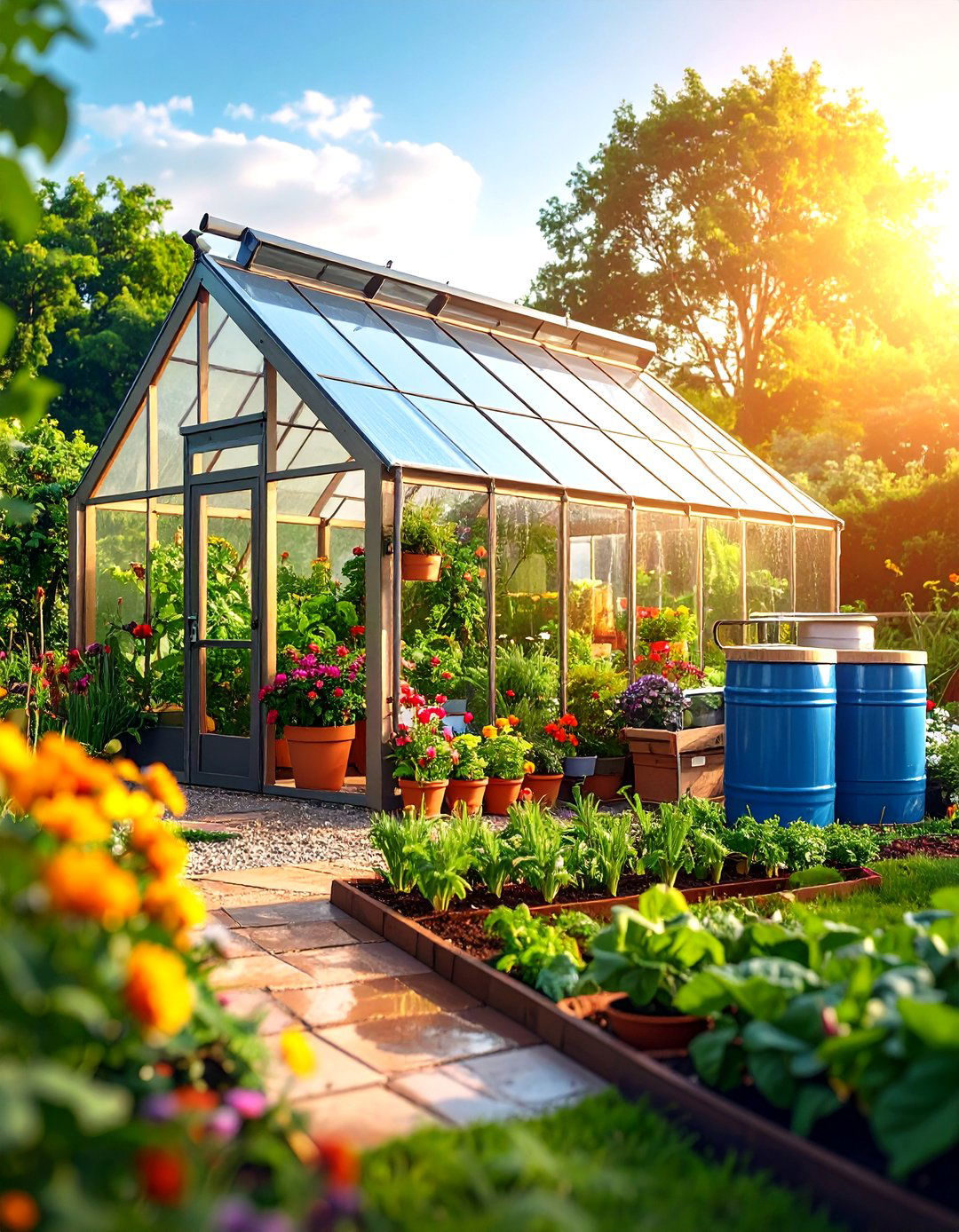
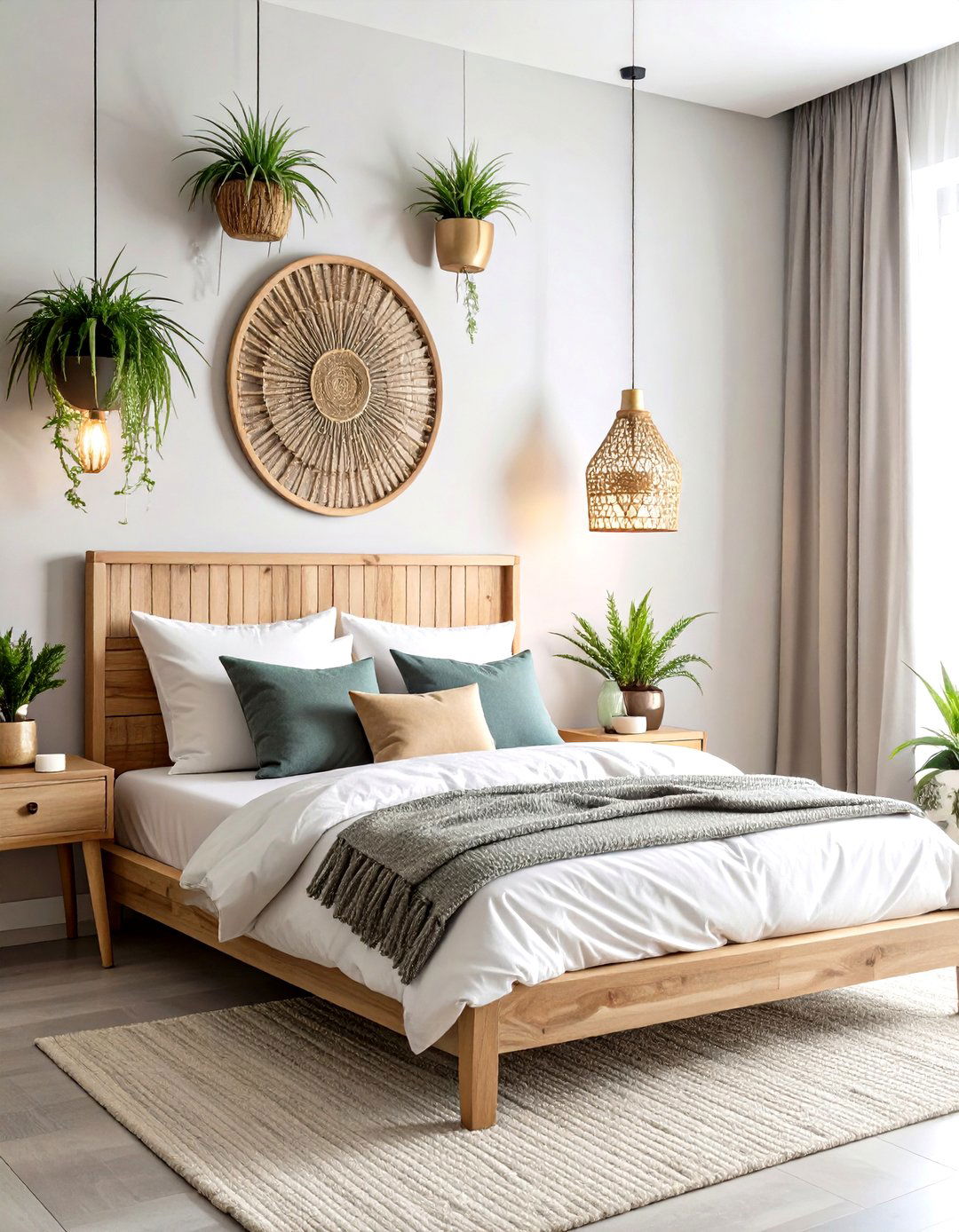

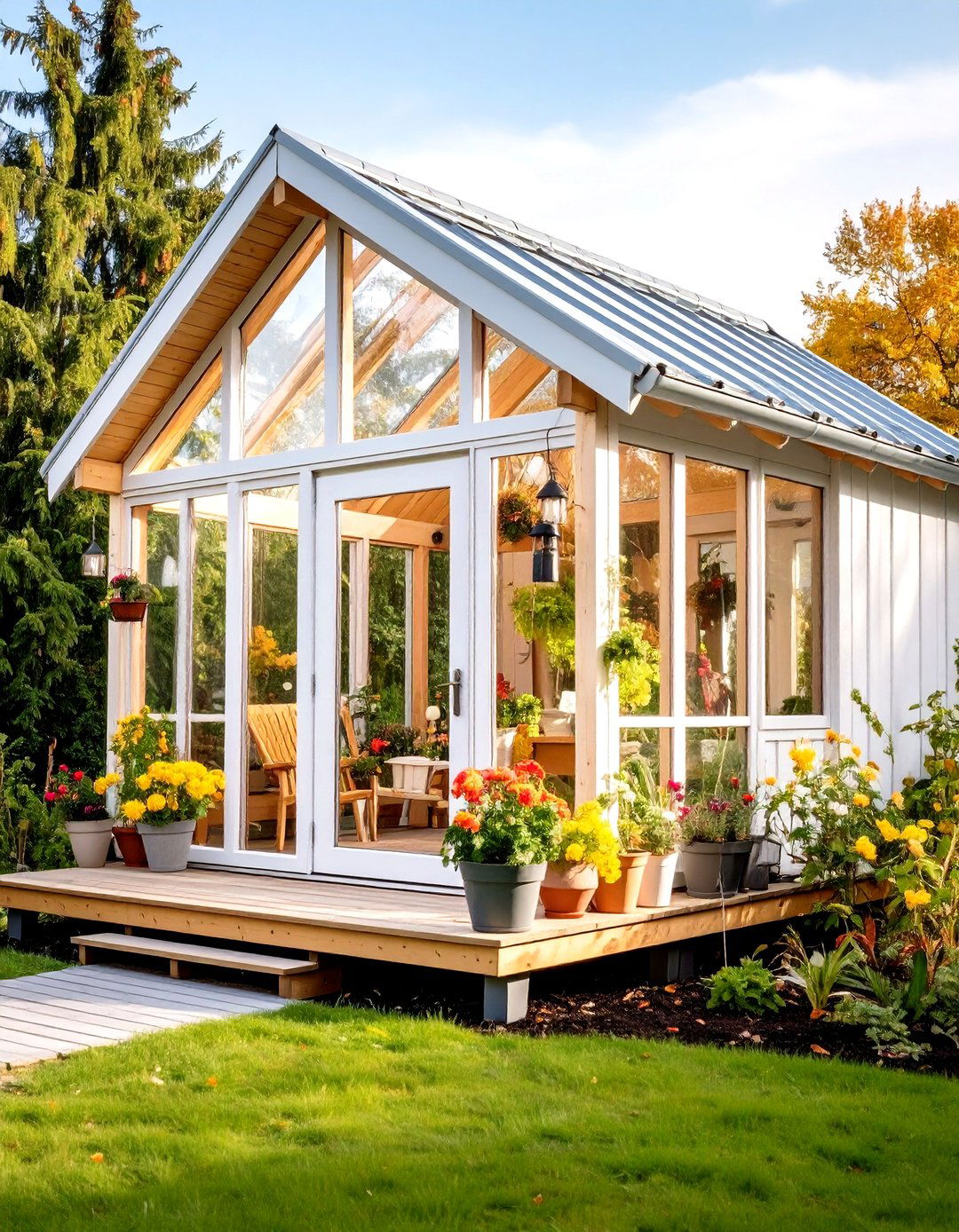

Leave a Reply